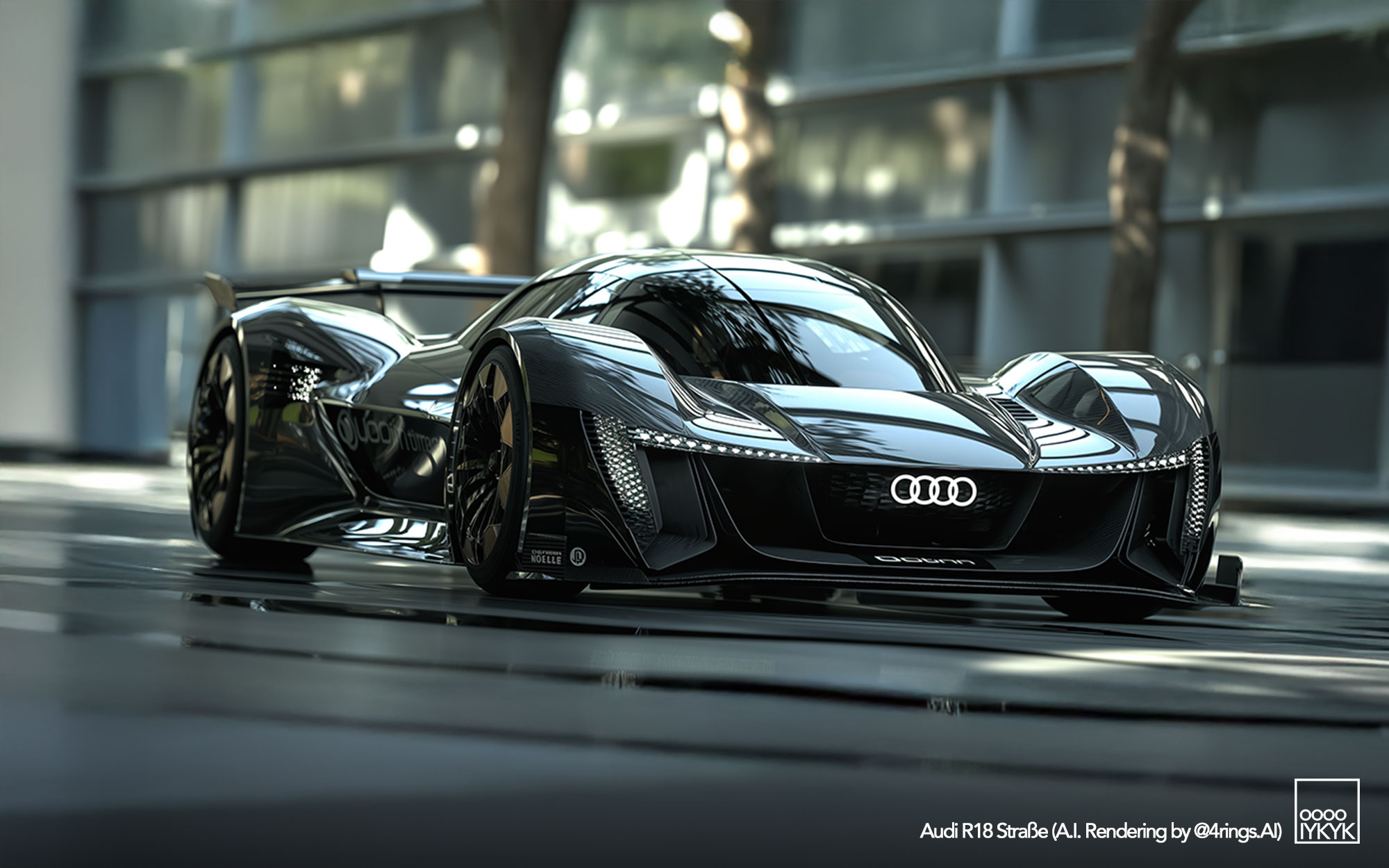From the earliest days of A.I. image rendering for the @4Rings.AI Instagram account, paying homage to Audi’s heritage at Le Mans has been a recurring theme.
All-told, Audi’s history at Le Mans was relatively short – just 17 years. Remarkably, the brand went from Le Mans rookie brand in 1999, to its first victory just a year later and logging 13 wins by their departure in 2016.
Though relatively short-lived in the 100+ year run of the race itself, in that short period Audi displaced Ferrari to become the second-winningest brand at the race. Other bragging points are the Audi R8 LMP1’s five victories for the most victories for a car and Tom Kristensen’s nine wins for the most victories for a driver (eight of which were at the wheel of an Audi).
For obvious reasons Audi aficionados are sweet on Le Mans. The Audi brand may have found its modern rebirth in rally and may be headed for F1 next season, but its show of sheer dominance and 17-year straight commitment to endurance racing has fueled passion for the Audi brand like little else.
Given this, the tributes have been wide. In 2023, the 100th anniversary of the very first 24 Hours of Le Mans, I dedicated a whole week’s worth of content to the race. That’s been a recurring theme for the @4Rings.AI account, one that expands well beyond the era of prototypes Audi raced.
Why query A.I. to make images of cars that already exist and won? One of the more enjoyable elements of A.I. is using it to imagine what might have been. Think of it as visualized historical fiction, or perhaps the racing equivalent of a Marvel Cinematic Multiverse. These cars, and in some cases people, didn’t exist as we know them… and yet the idea of them is fascinating.
All that said, here are some of my favorites. Beneath those is a full gallery of renderings that have run on the account. I’m running them in imagined multiversal-chronological order. If you like what you see, make sure to give @4Rings.AI a follow HERE.
IMAGINED 1923 HORCH LE MANS SPEEDSTER + DRIVER: INES KEIL-FOLVILLE
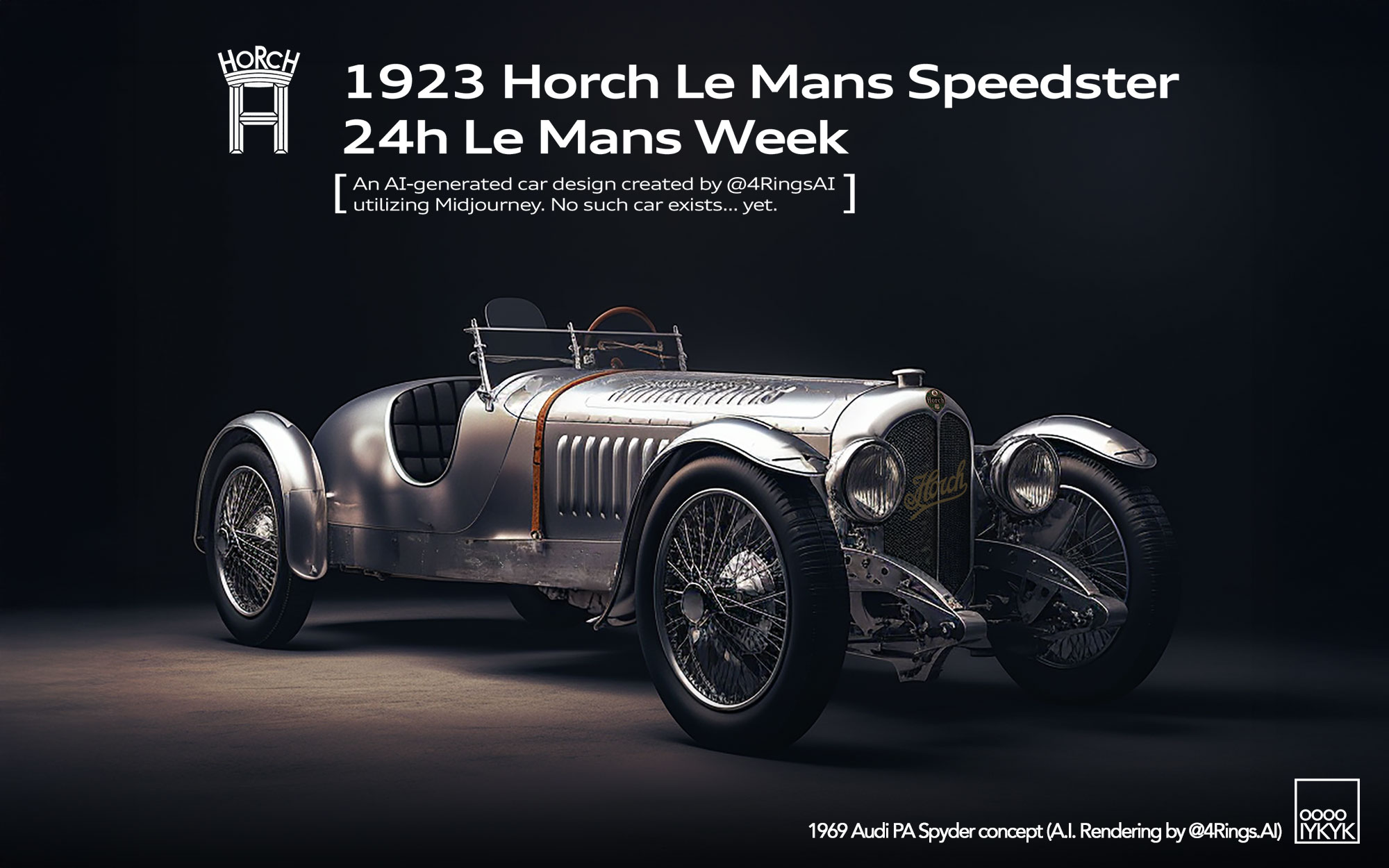
Though the race was running in the years the pre-war luxury brand Horch existed and Horch was a car that some period racers actually entered into competition, no Horch ever ran at Le Mans that we know of. Given the intersecting timeframe though, it’s fascinating to think of a Horch racing speedster in the first 24 Hours of Le Mans held a decade and a half prior to the emergence of the Auto Union Silver Arrows.
A polished aluminum Speedster seemed fitting. The roadster isn’t specifically a Porsche, though it is a convincing pre-war 2-seater roadster not far off from cars of that period. In post production I added Horch badging including golden brand lettering on the grille.
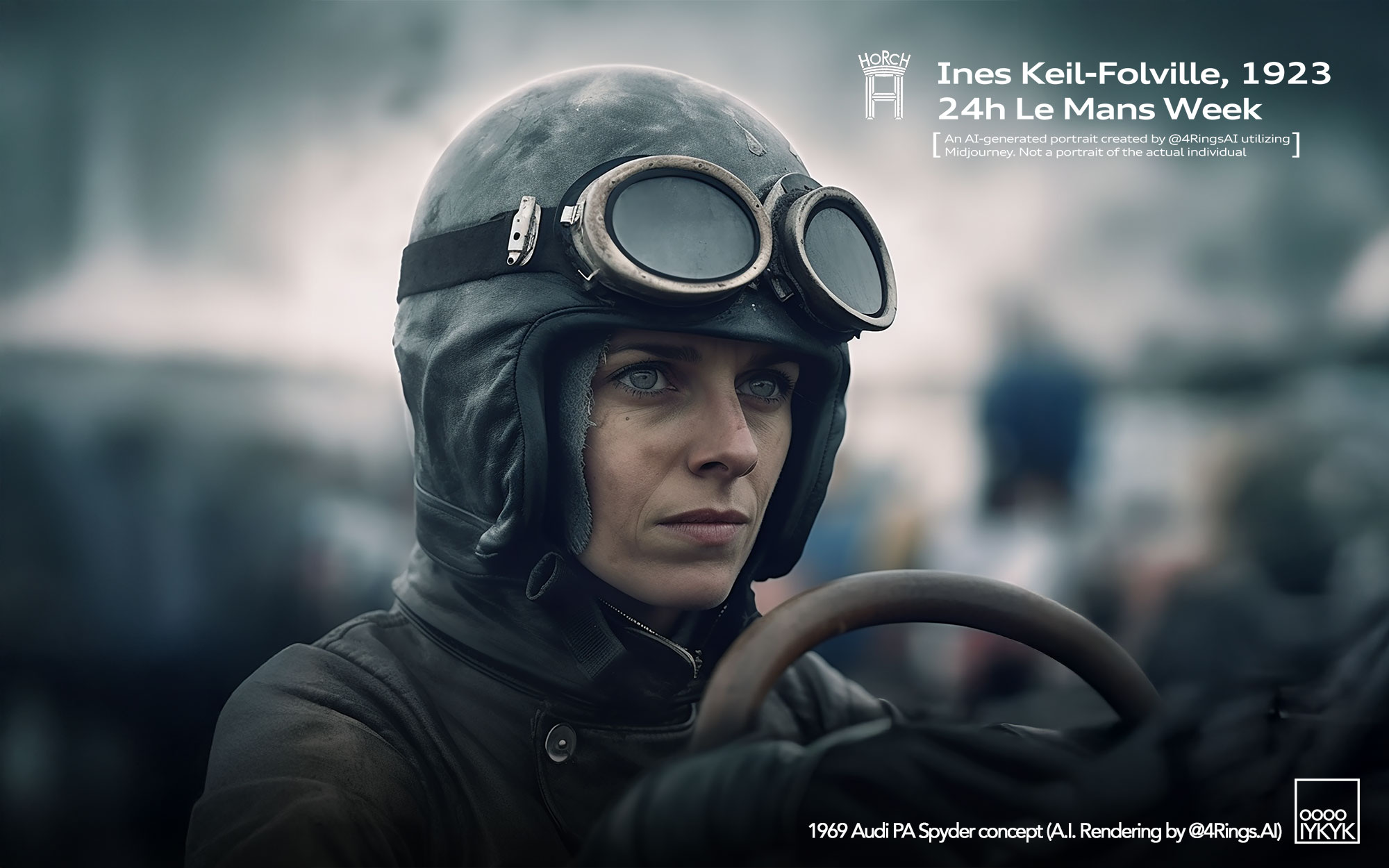
As for a driver, prequeling the idea of Michèle Mouton’s victories in rally (and a non-Audi for her at Le Mans for what it’s worth), I wanted to place a woman driver in this 1923 Horch. Some quick research informed me of a woman by the name of Ines Keil-Folville. Specifically, I found a post by her great granddaughter Annette on the Autosport forums describing her as being born in Frankfurt am Main, Germany, went on to become a member of the ADAC and AvD, raced both for Horch and for Bugatti, and specifically took part in 24-Hour races like one in Taunus. Additionally, she was married to engineer Maurice Folville then later to racecar driver Hans Keil. Additionally, her granddaughter’s account suggested during this time she became acquainted personally with Silver Arrows racing greats like Hans Stuck and Rudolph Carraciola.
She sounds fascinating.
While imagining a woman driver in this capacity is one thing, it’s so much more perfect to have found someone specifically who was competing and winning in period, not to mention driving a Horch.
The rendering of Ines isn’t actually her. It’s simply a German-looking female imagined behind the wheel of a racing roadster. For actual images of Ms. Keil-Folville, follow this link (in German) to learn more.
IMAGINED 1955 AUTO UNION TYPE G LE MANS
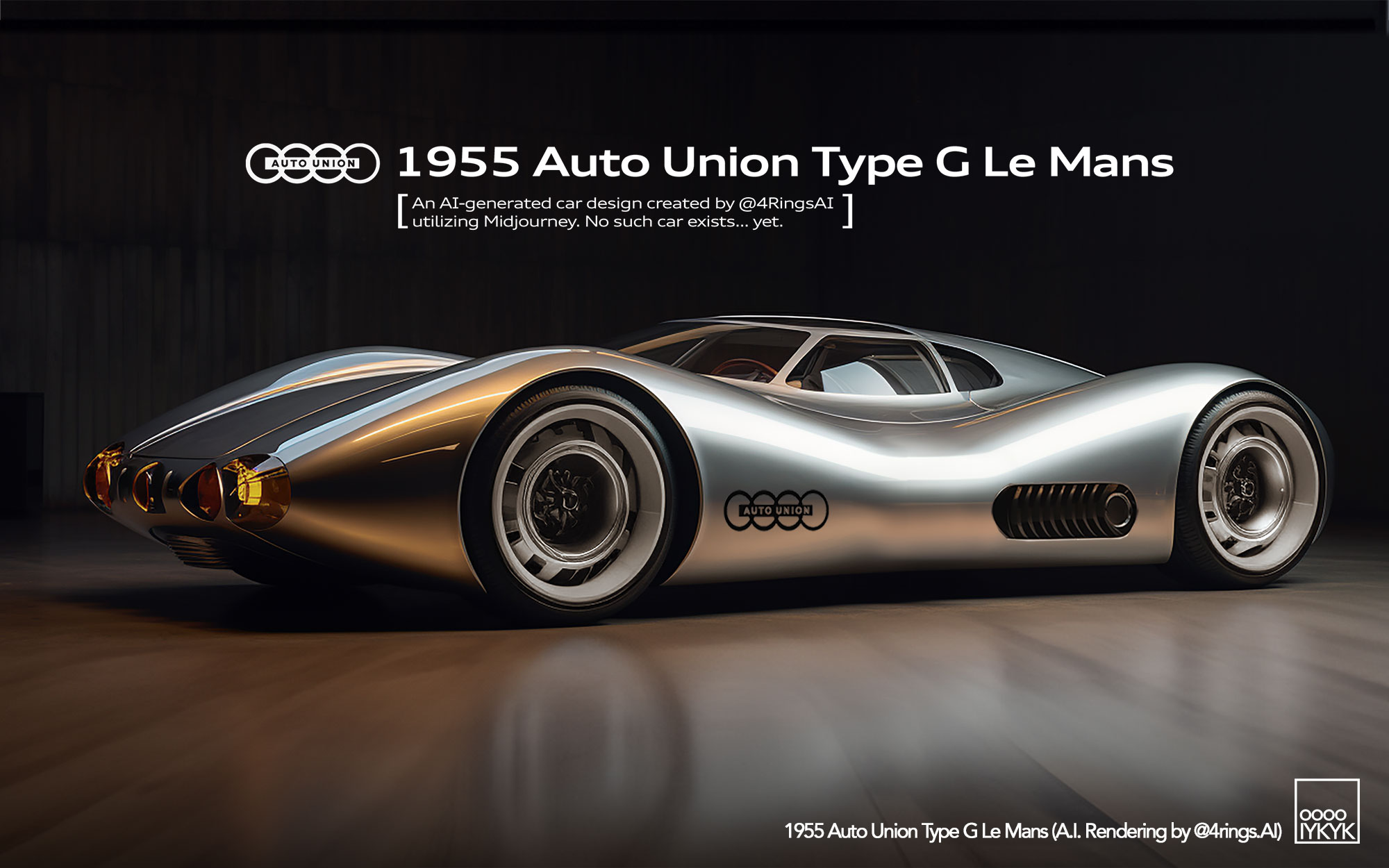
Besides the obviously oversized diameter steel wheels, this car has a closed-top Porsche 550 appearance to it. Extra points to A.I. for giving it French-looking yellow light covers as well.
Here, I’ve dubbed it an Auto Union because Audi hadn’t made a return yet. I’ve also called it Type G, placing it two-generations of racecar following the final pre-war Auto Union silver arrow Type D. Via Dr. Ferdinand Porsche, Auto Union pioneered mid-engine configurations in the highest levels of racing before the war, so it’s interesting to imagine what might have been had Auto Union’s assets not all fallen behind the iron curtain and into the hands of the Soviets in the years following the war.
Not many changes were made in post production. Some details were cleaned up, and an Auto Union logo was added on the lower front quarter panel behind the front wheel as an homage/prequel to the four ring logos that would show up on the ur quattro in the 1980s.
IMAGINED 1958 AUTO UNION 1000 LM SPYDER
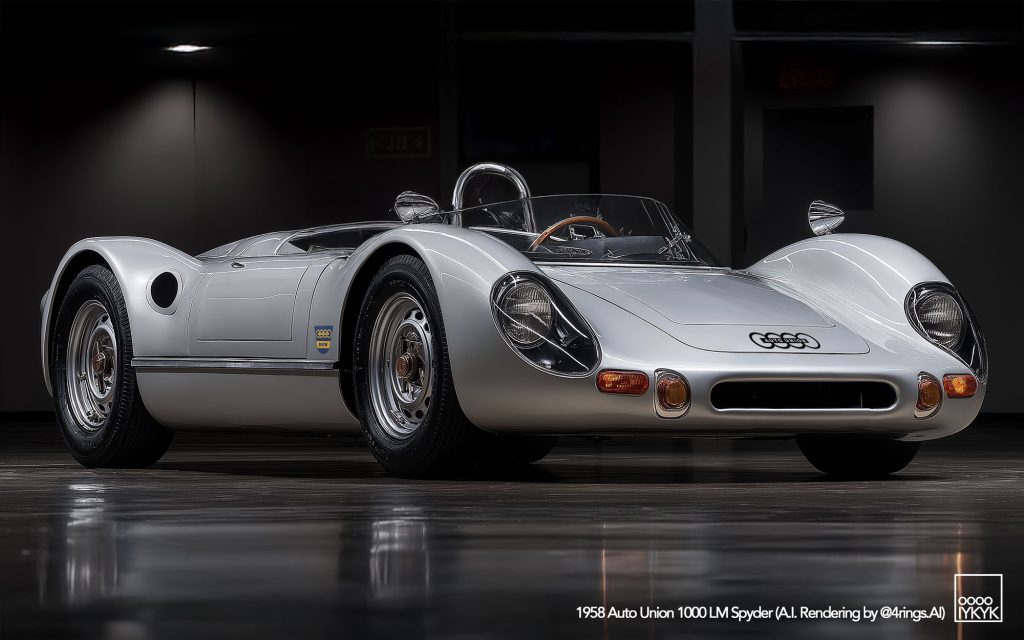
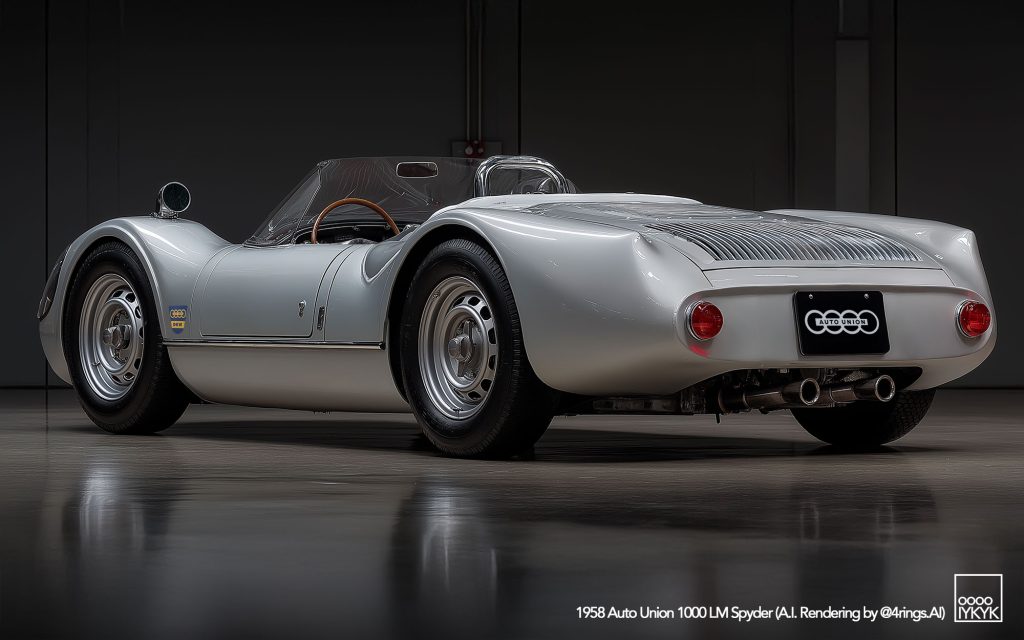
By 1958, Auto Union was preparing to launch its new model the 1000. Eventually there’d be other variants, like he Thunderbird inspired 1000 SP. In this period, Porsche was also solidly leaving its mark so I imagined an Auto Union 1000 LM Spyder with heavy influence from Porsche. One of the unintended cues of the car are those subtle fins at the rear – a cue Porsches don’t have but uniquely were seen on the production Auto Union 1000 SP coupe. These renderings are from this year, so much more realistic than earlier renderings like the Type G above.
Post processing here involved cleaning up some unnecessary or busy details and adding period-looking Auto Union badges on the front quarter panels, plus Auto Union logos on the nose and rear license plate.
IMAGINED 1961 AUTO UNION 1000 LM COUPE
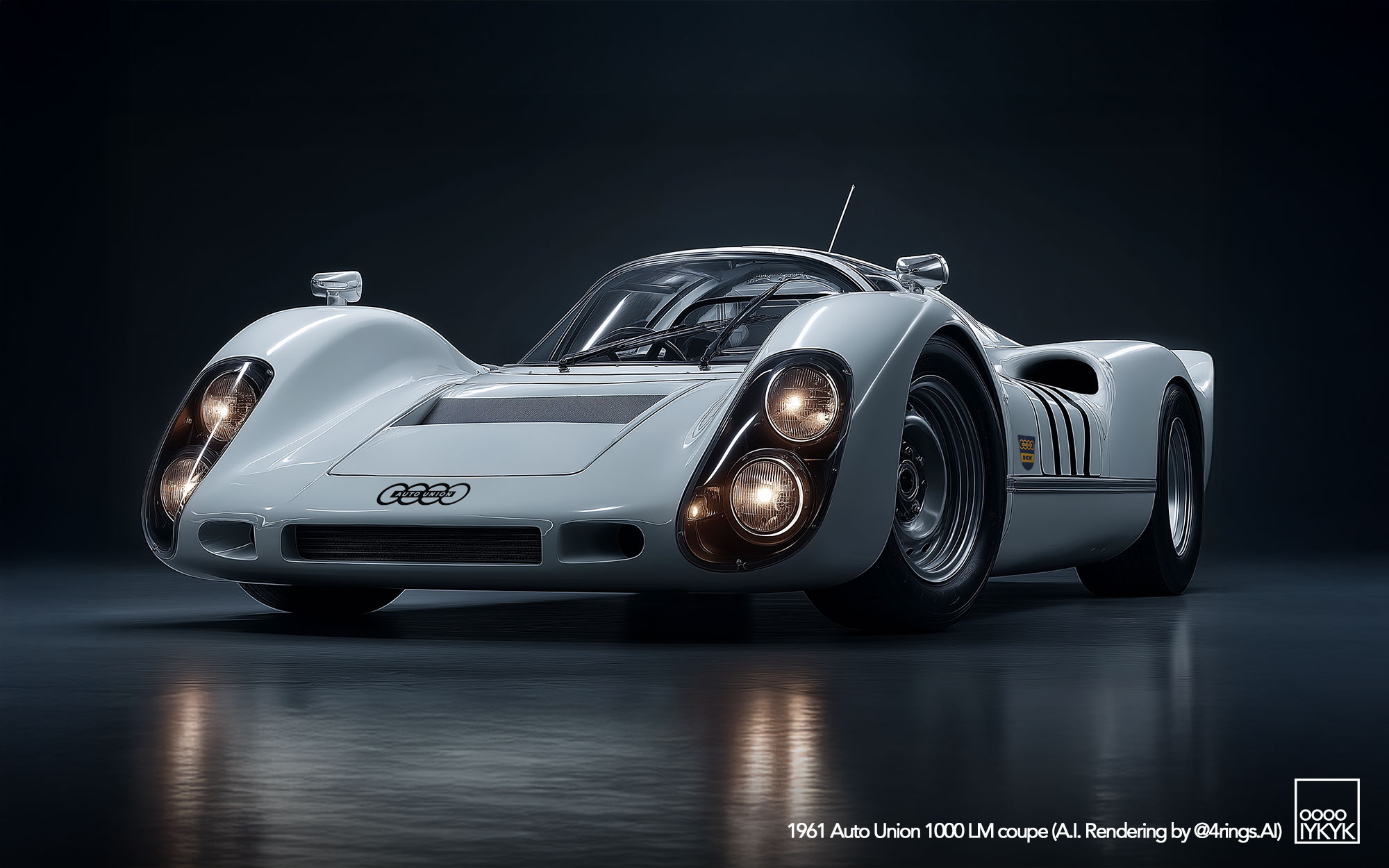
I may have timed this one about five years early if we focus on the obvious Porsche 906 influence in these designs. The theme here is a closed-top evolution of the earlier 1000 LM Spyder above, here going for a closed-top coupé. As with the Spyder, the only post process changes were cleaning up some details and adding Auto Union logos and badges.
The rendering created a lot of cool images, so I’ve included a bunch.
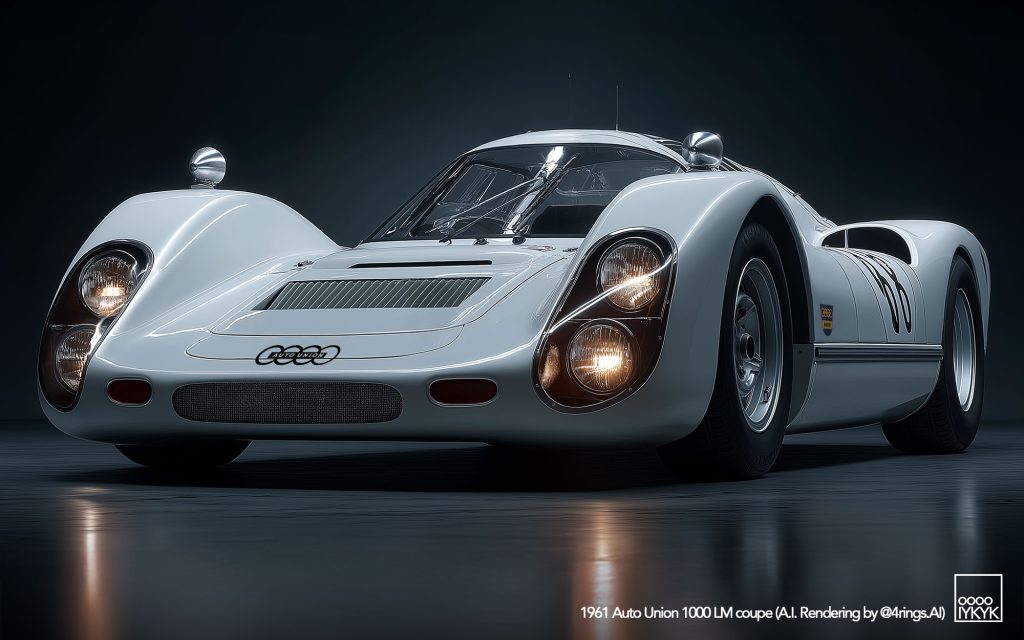

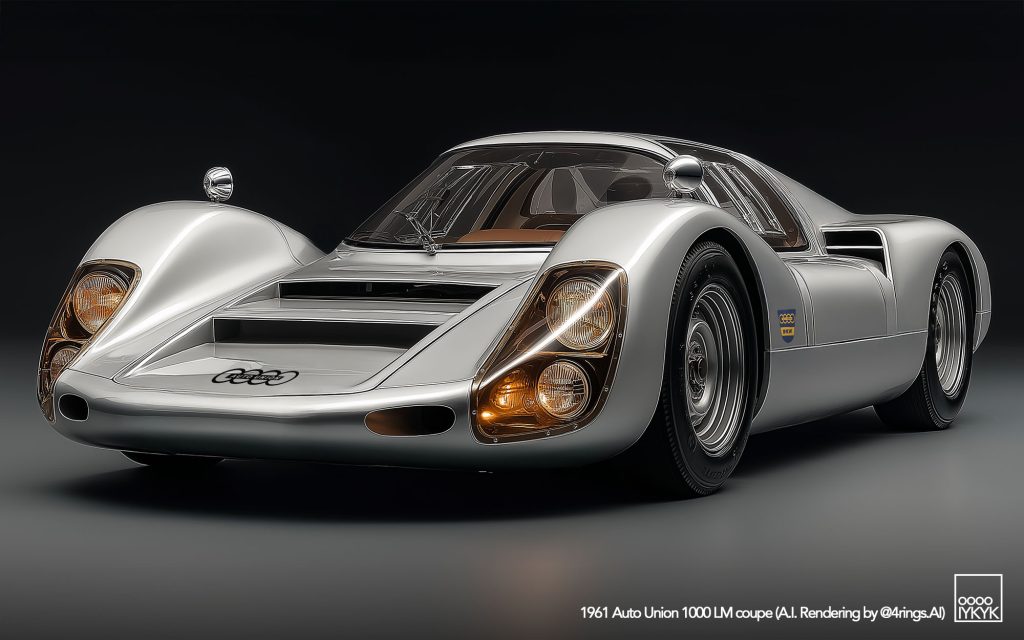
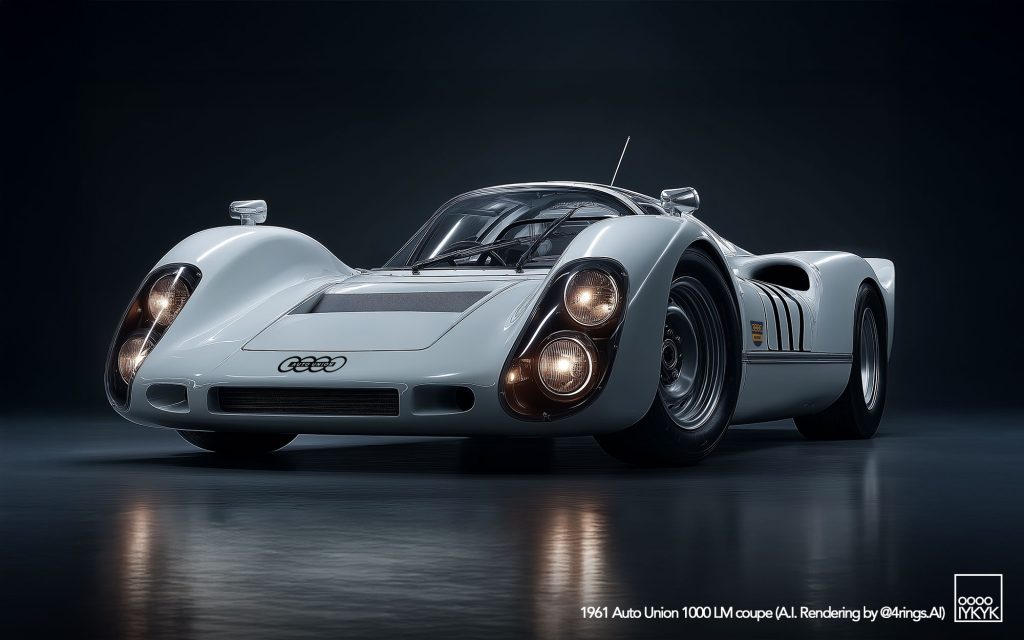
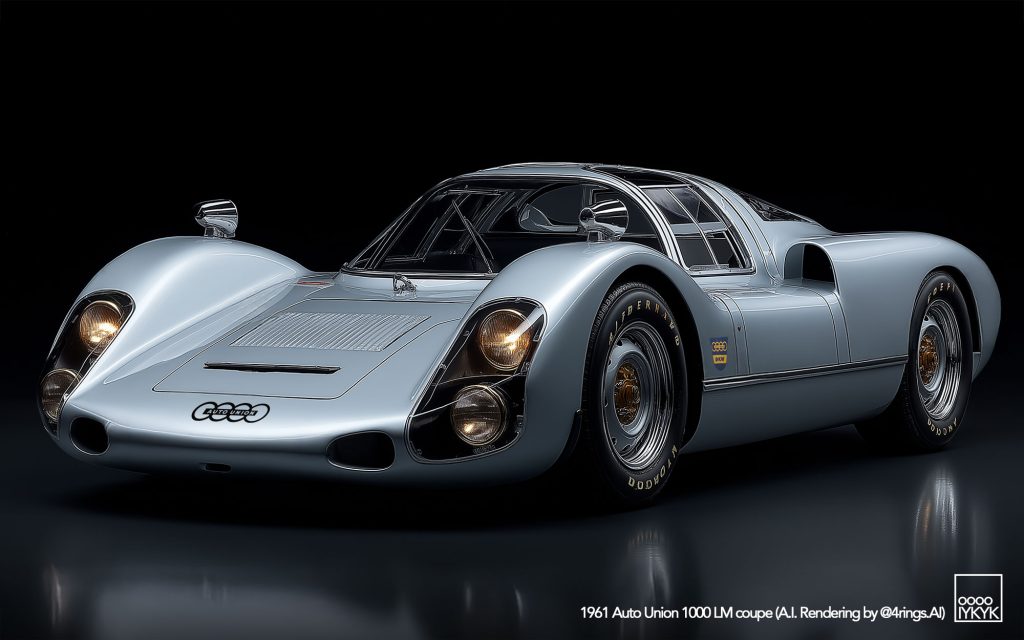
‘
IMAGINED 1969 AUDI PA SPYDER CONCEPT
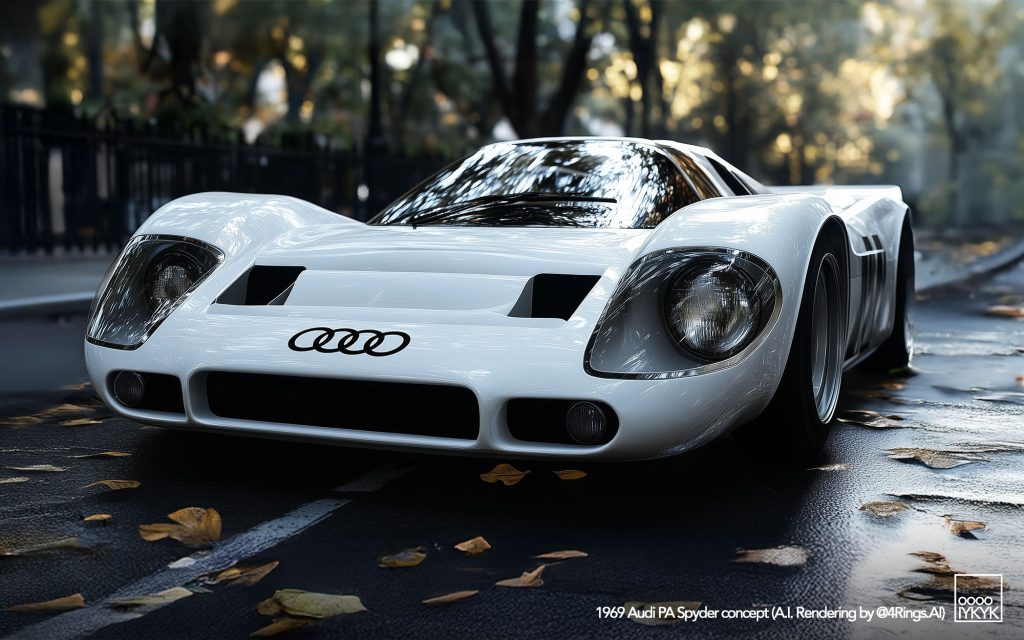

A measure taken by Volkswagen moving to reestablish the Audi brand in the United States was to pair the brand with Porsche at dealerships under the branding of “Porsche + Audi”. This was long before the advent of quattro or even Audi Sport, and largely only a marketing effort in America. For the most part, this meant branding on collateral like product catalogues, though it also took a prominent place on the side of Porsche 917-derived Can-Am competition cars.
Likely this all worked because Audi wasn’t seen as a threat. Unlike when Audi eventually did arrive at Le Mans and was competing more directly with Porsche on road and track. The Porsche + Audi era was a simpler time, and this car seems to hark that… a roadgoing 917 derivative meant as concept car and taking the same PA (for Porsche + Audi) nomenclature as the original Vasek Polak 917 PA Spyder that ushered in the 917 Can-Am era.
IMAGINED 1971 AUDI PA COUPE
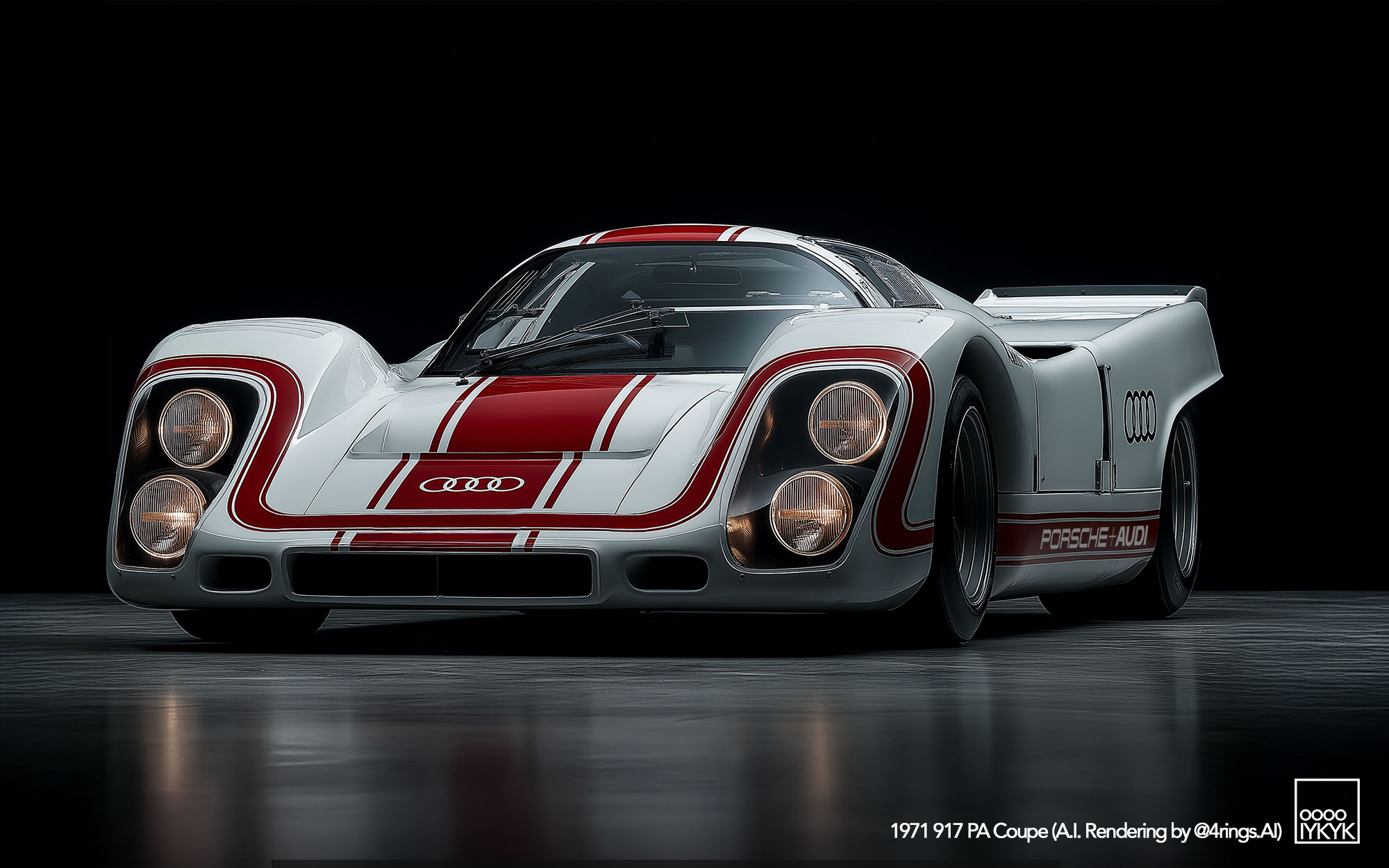
Here again, the idea is to build on the American Porsche + Audi lore to fill in an imagined backstory for such a project. Back in America, there was a push to establish Audi as a credible competitor to BMW and Mercedes-Benz. Could American marketing money have funded adding another 917 or two to the grid at that year’s Le Mans.
Consider this. The 917 had proven itself the year prior when the Piëch run Porsche Salzburg car took victory. Steve McQueen’s movie Le Mans was set to debut in June of 1971, about the same time as the 1971 race when no less than six 917s were on the grid – three 917Ks like the previous year’s victor, and three 917Ls with the long tail design. The cars were split between Martini Racing and Gulf Racing, including the McQueen-associated JW Automotive squad in one of the 917Ks.
The cars were dominant and expected to win, something the #22 Martini Racing 917K would achieve. So, could there have been an addition one or two 917s on the grid? By 1972, Ferdinand Piëch had taken a new position at Audi. Perhaps a coup to signal his return could have been fielding further 917s badged as Audi and wearing the Porsche + Audi branding.
Would he have tapped the Porsche Salzburg organization that was part of the Piëch family’s business? Could he have tapped Penske Motorsport who would eventually get involved in racing the 917/30 in Can-Am just a few years later? In 1971, they fielded a Ferrari 512M driven by Mark Donohue and David Hobbs. Their Ferrari retired with engine trouble.

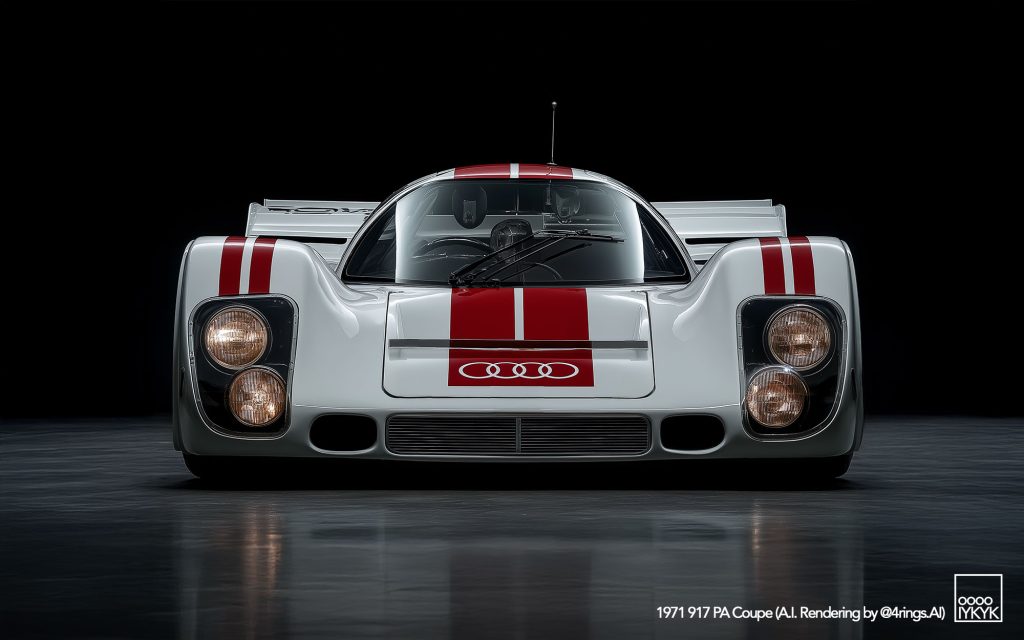
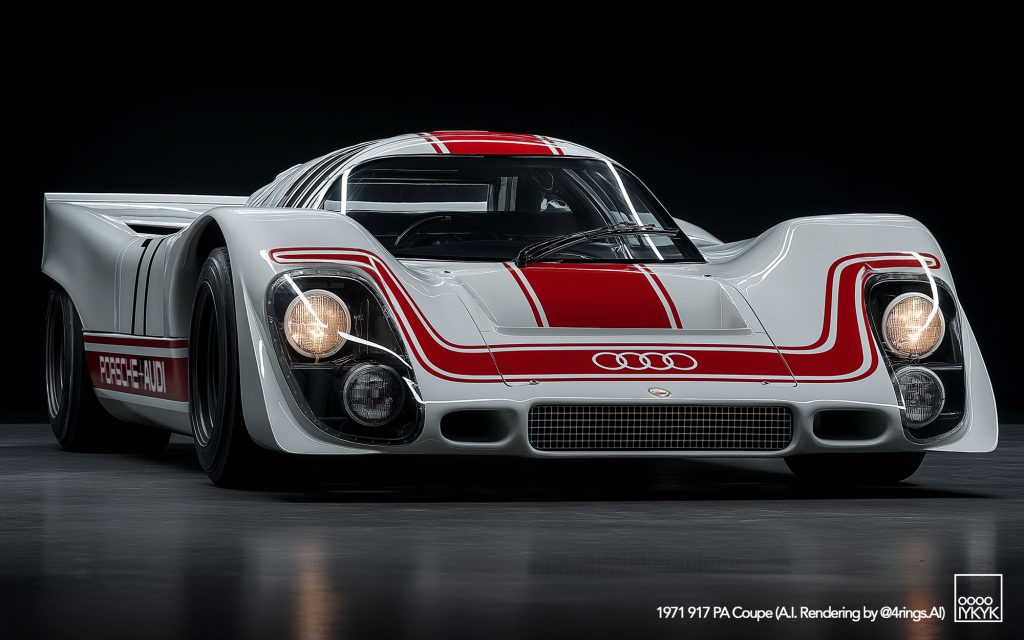
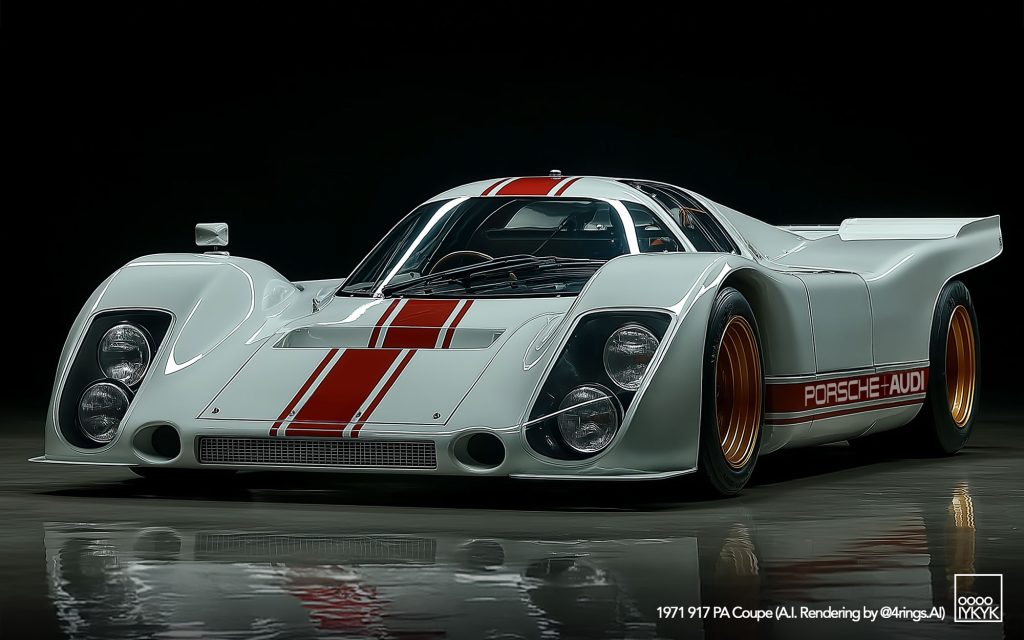
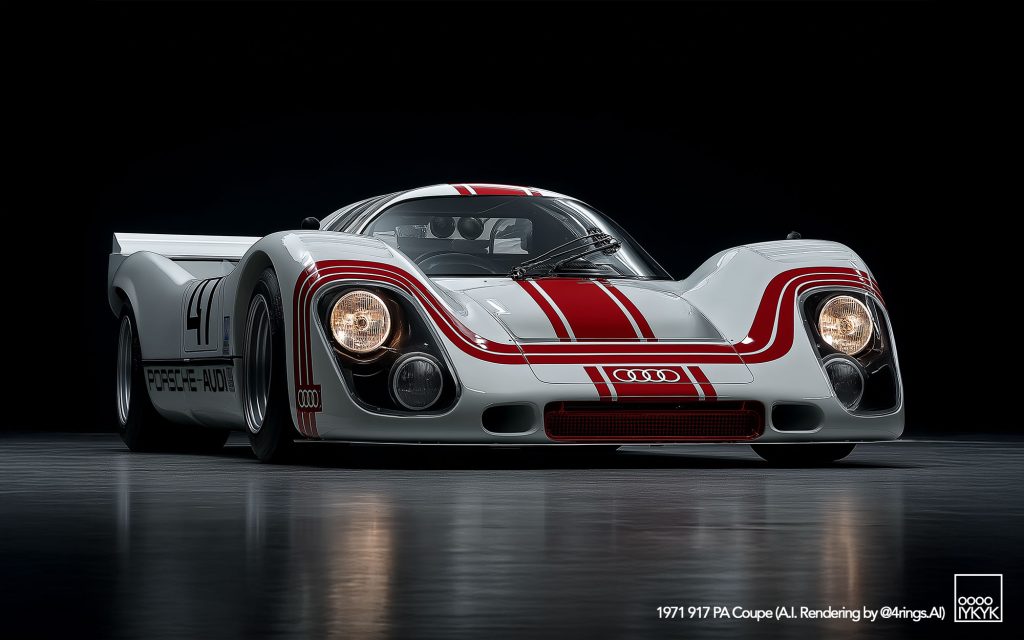
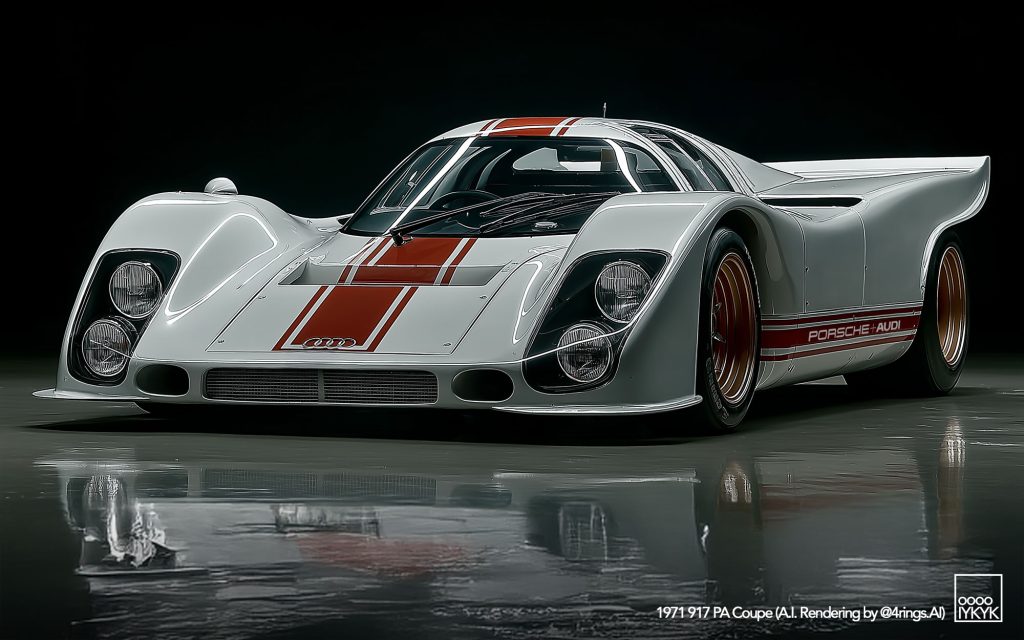
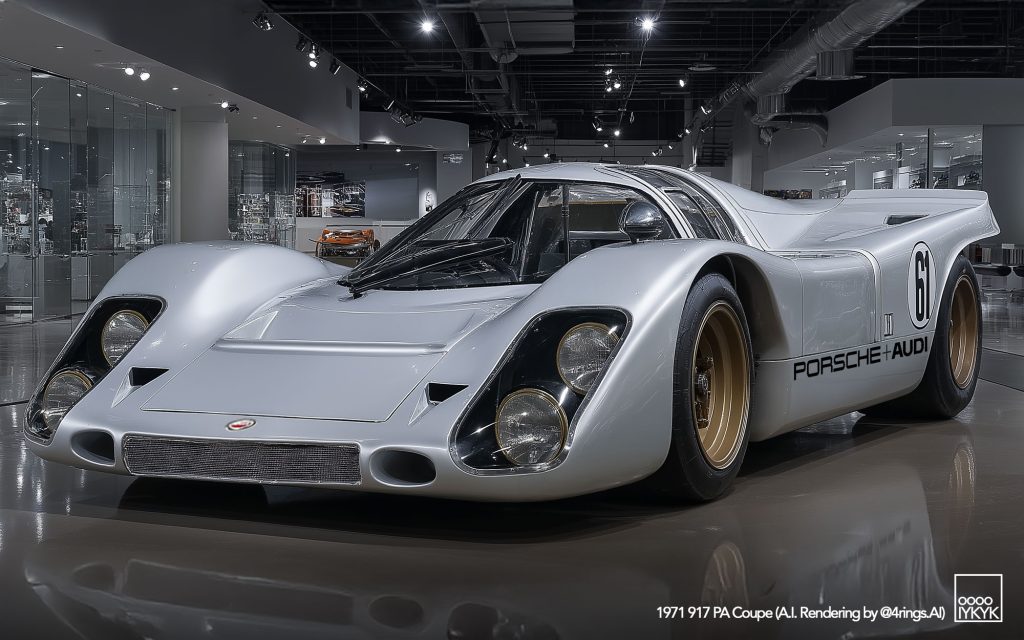
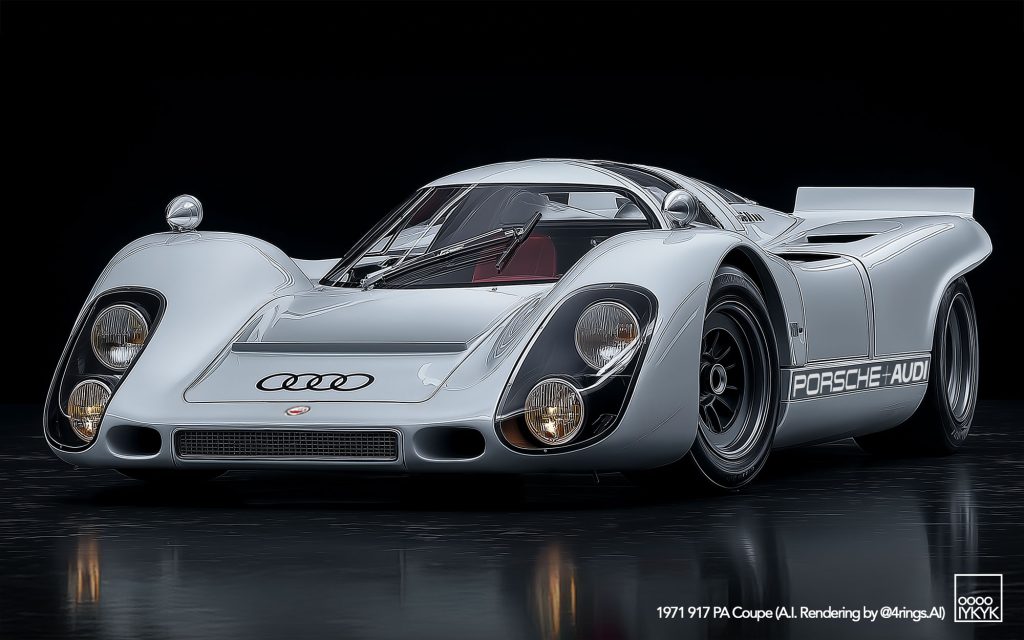
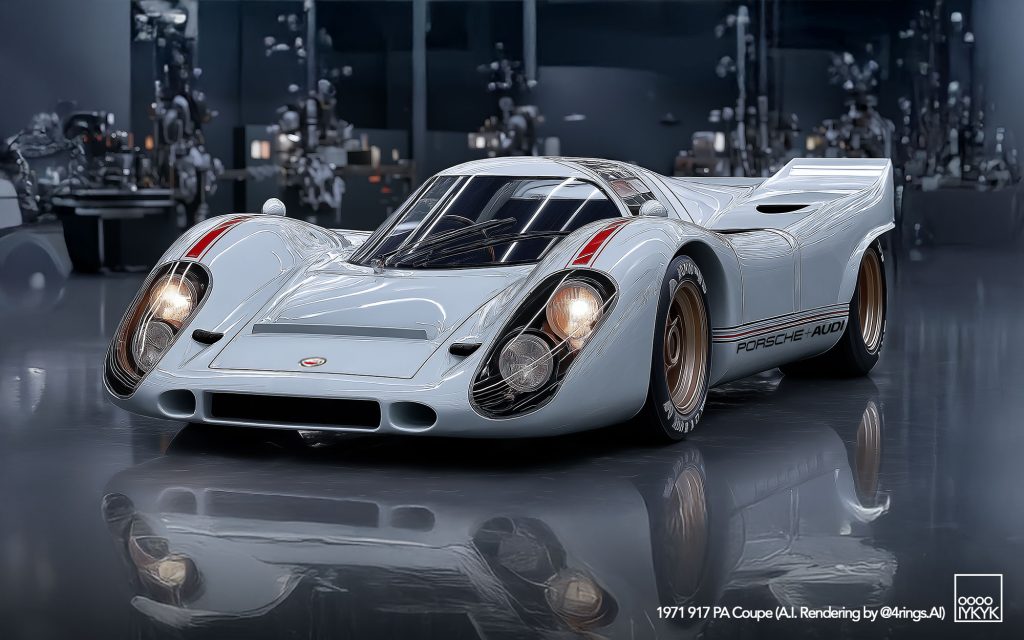
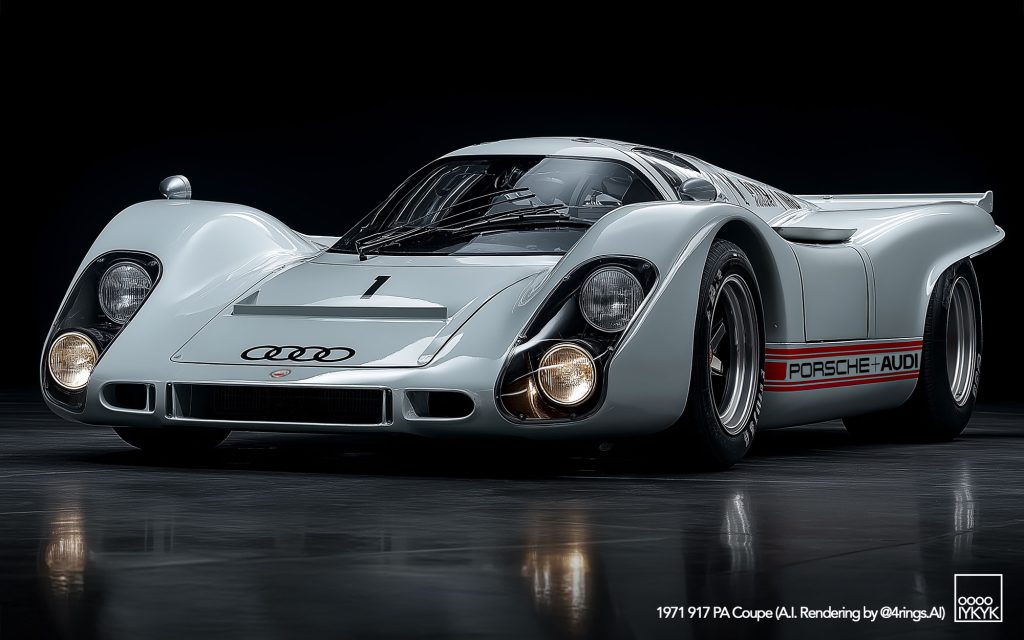
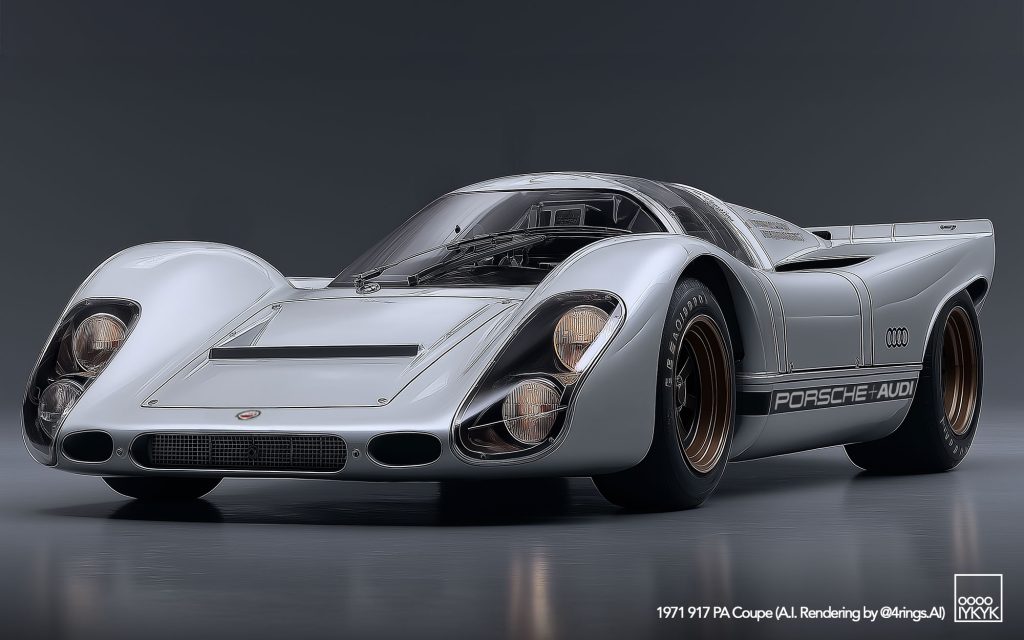
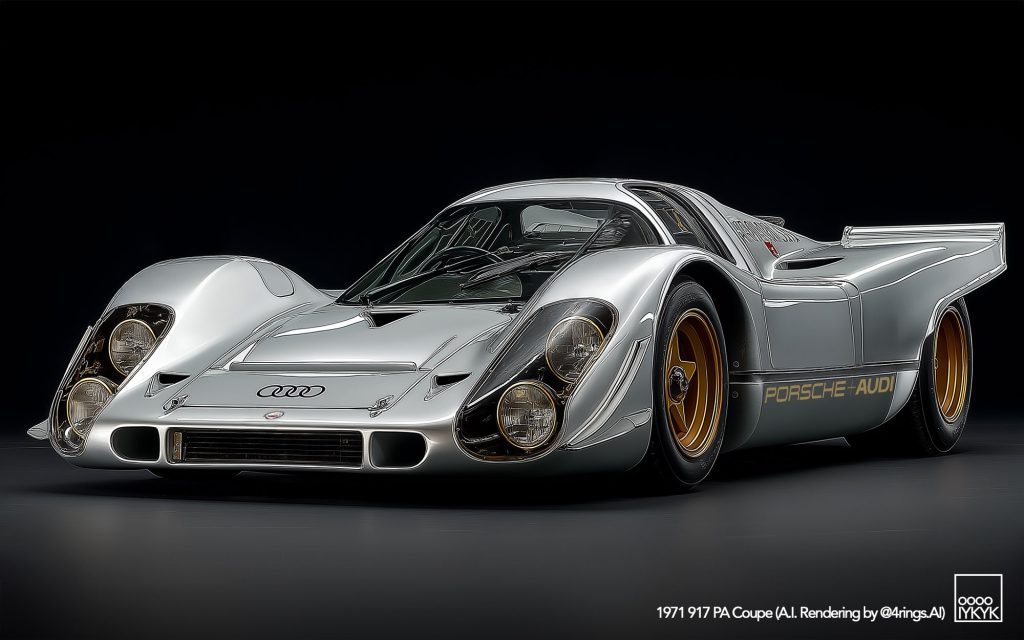
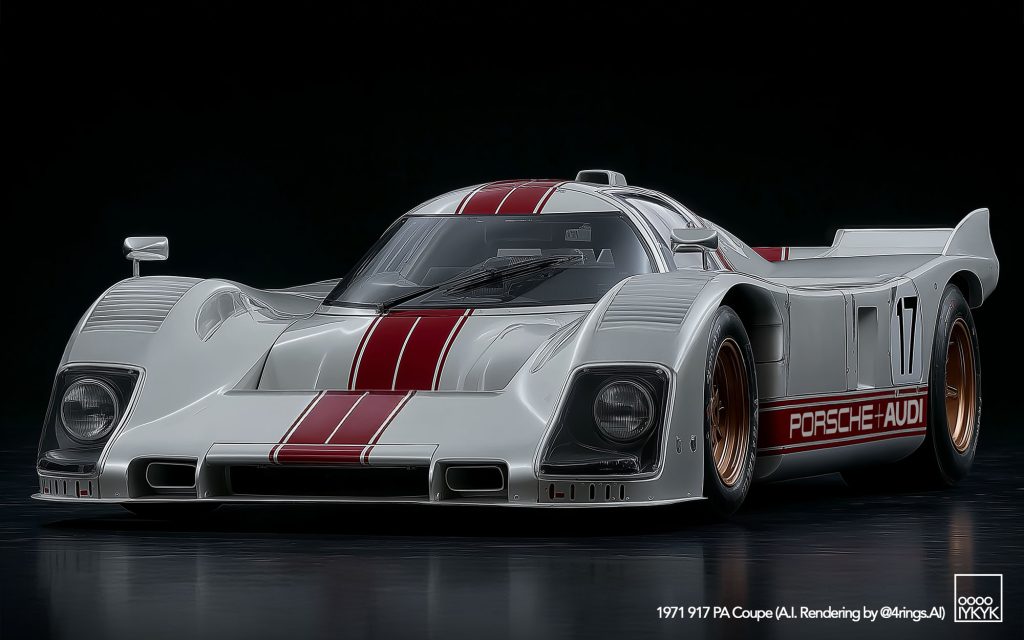


IMAGINED 1973 PORSCHE + AUDI 917/30LM TEAM PENSKE SUNOCO

As you may pick up by the image quality, this last 917-derived car was created with an earlier version of the A.I. tool. Even still, what looks like an evolved 917K design with a bit of later Group C influence is the basic form, with coloring of Sunoco that was Team Penske’s primary sponsor during this period and most memorably in Can-Am.
Of course, by 1973 the 917 was outlawed. For this fictional image to have made it, the car’s eligibility for Le Mans would have had to have been extended into that year.
IMAGINED VARIOUS AUDI AUDI HYPERCAR / GTP DESIGNS
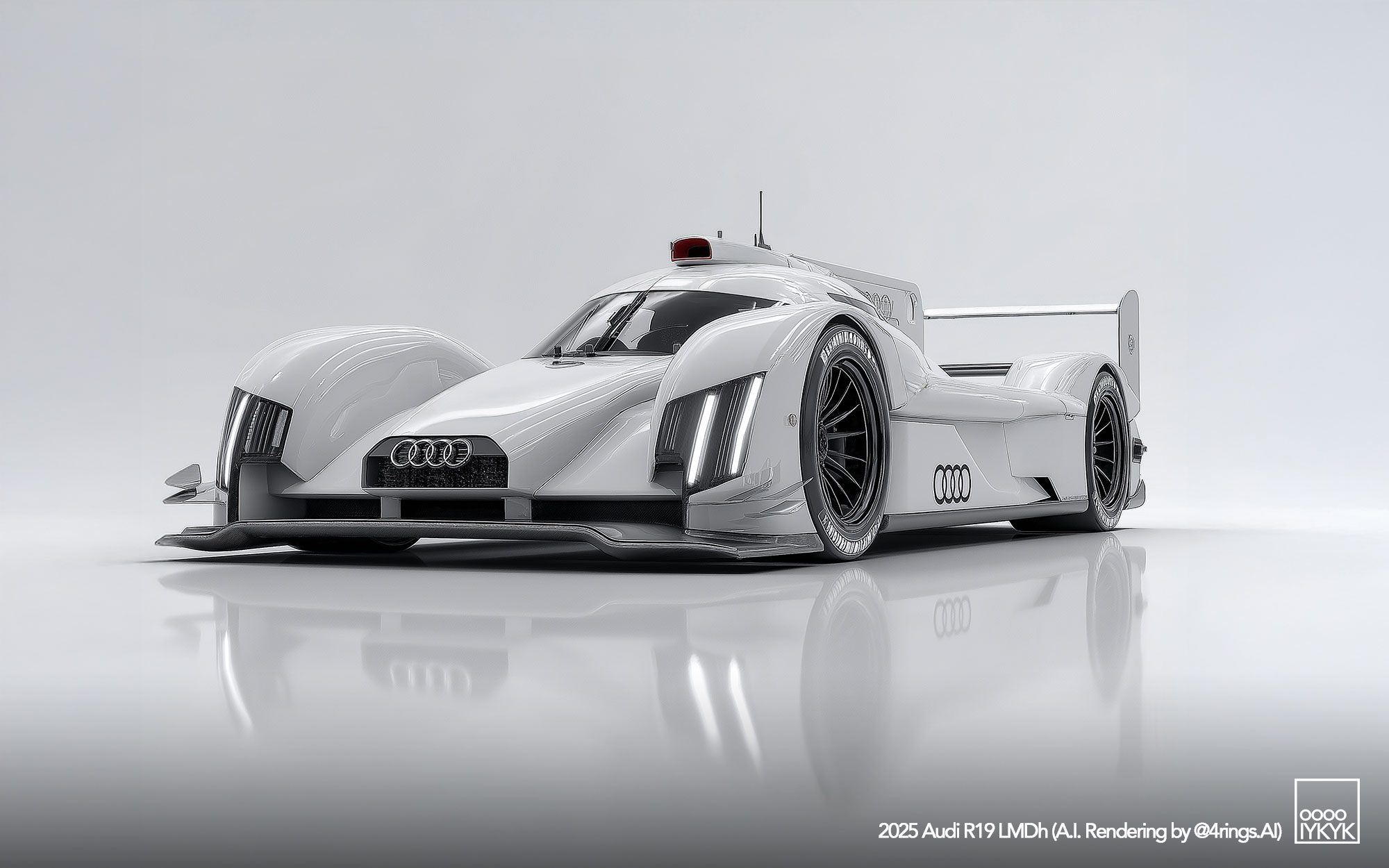
Most Audi motorsport fans know that when IMSA and Le Mans announced plans for a formula that would make cars eligible for Le Mans, the FIA WEC and IMSA, Ingolstadt proceeded to begin designing a car in cooperation with Porsche. Though its bodywork and teams would have been different, the car would have shared the Multimatic chassis and engine of the current Porsche 963.
Financial challenges and a prioritized commitment to F1 saw the plug get pulled on the next-generation Audi Le Mans car just before actual testing of the car were schedule to begin. Likely development was very far along, though no design of the car has yet to surface. In lieu of that, I’ve generated plenty of renderings as representation. Here are some of my favorites.

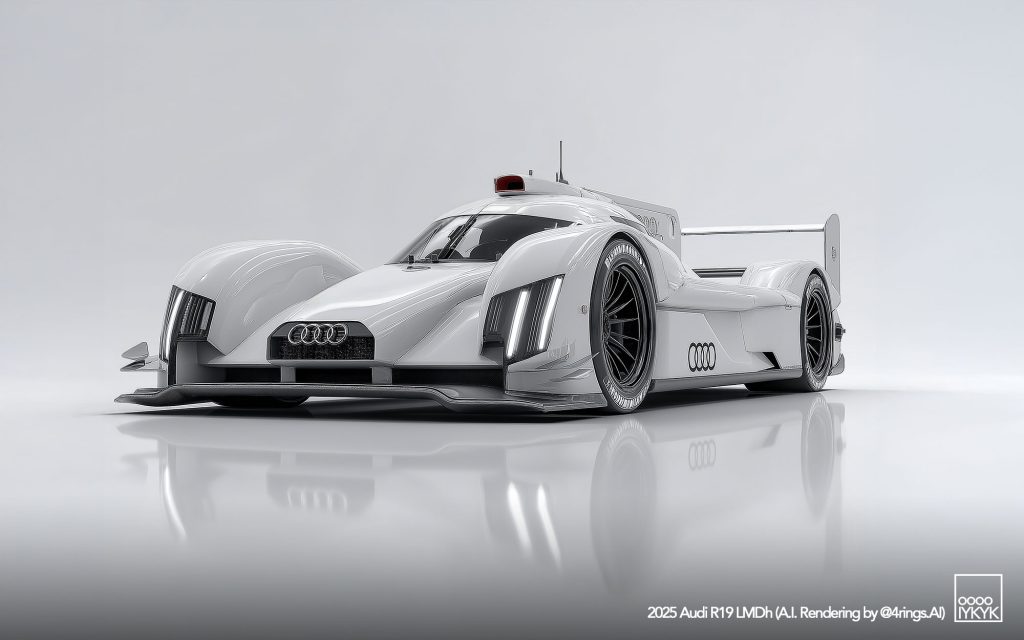
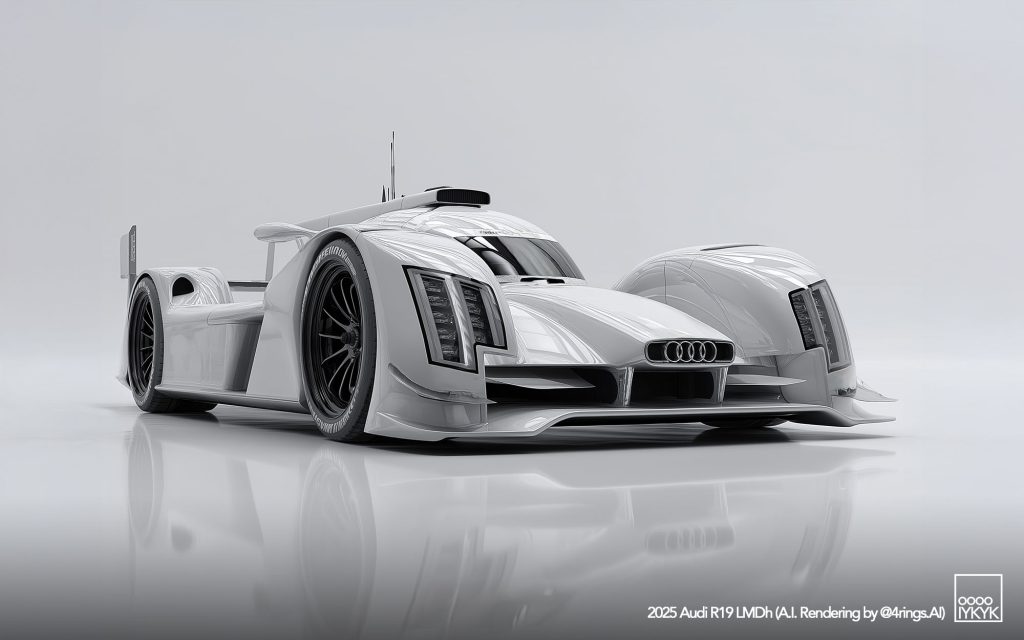


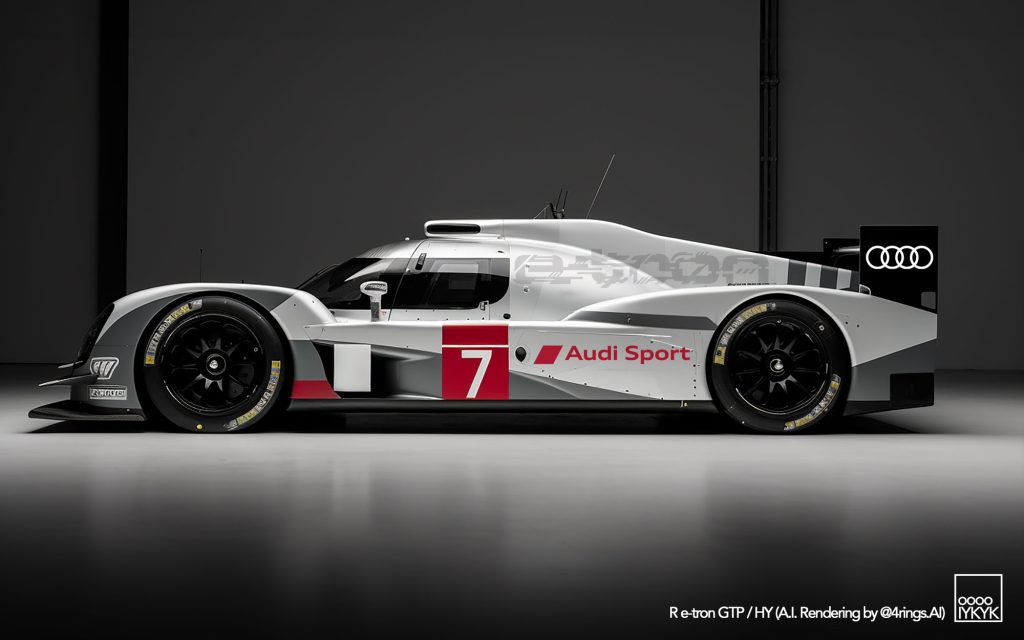
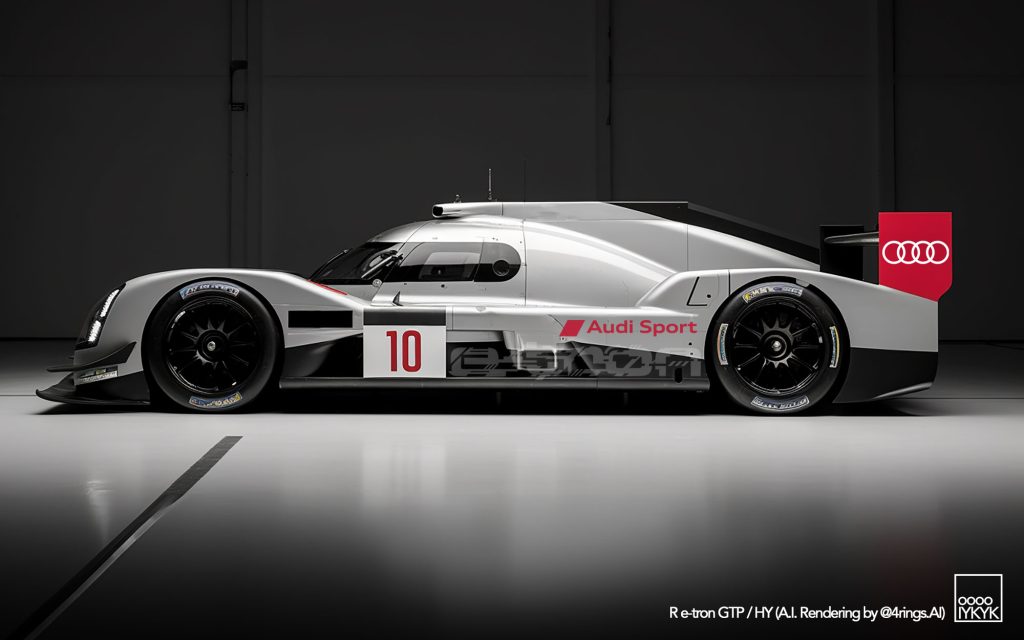


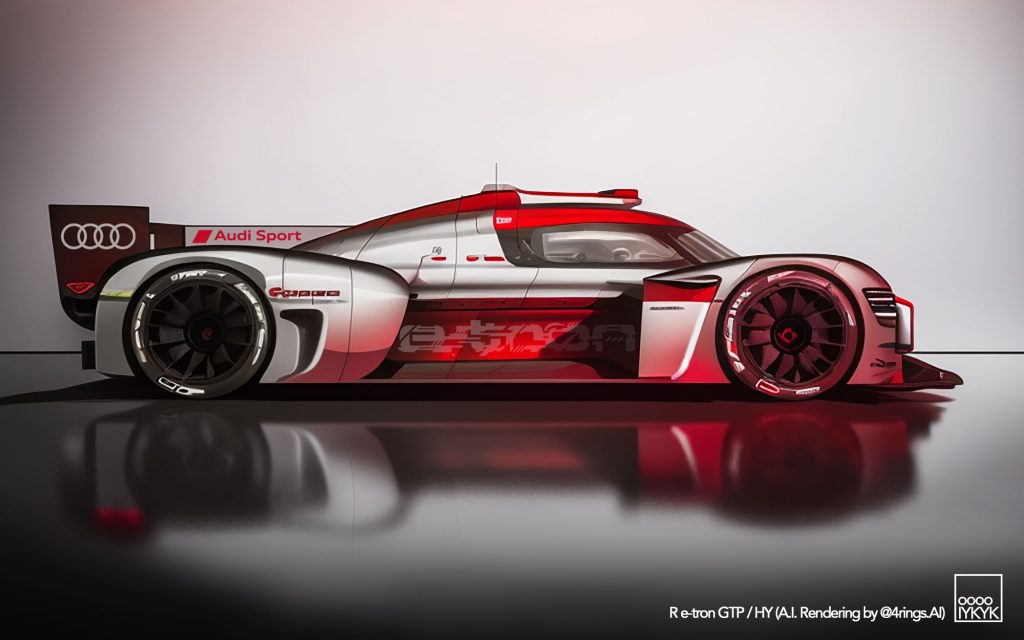

IMAGINED AUDI R18 STRAẞE
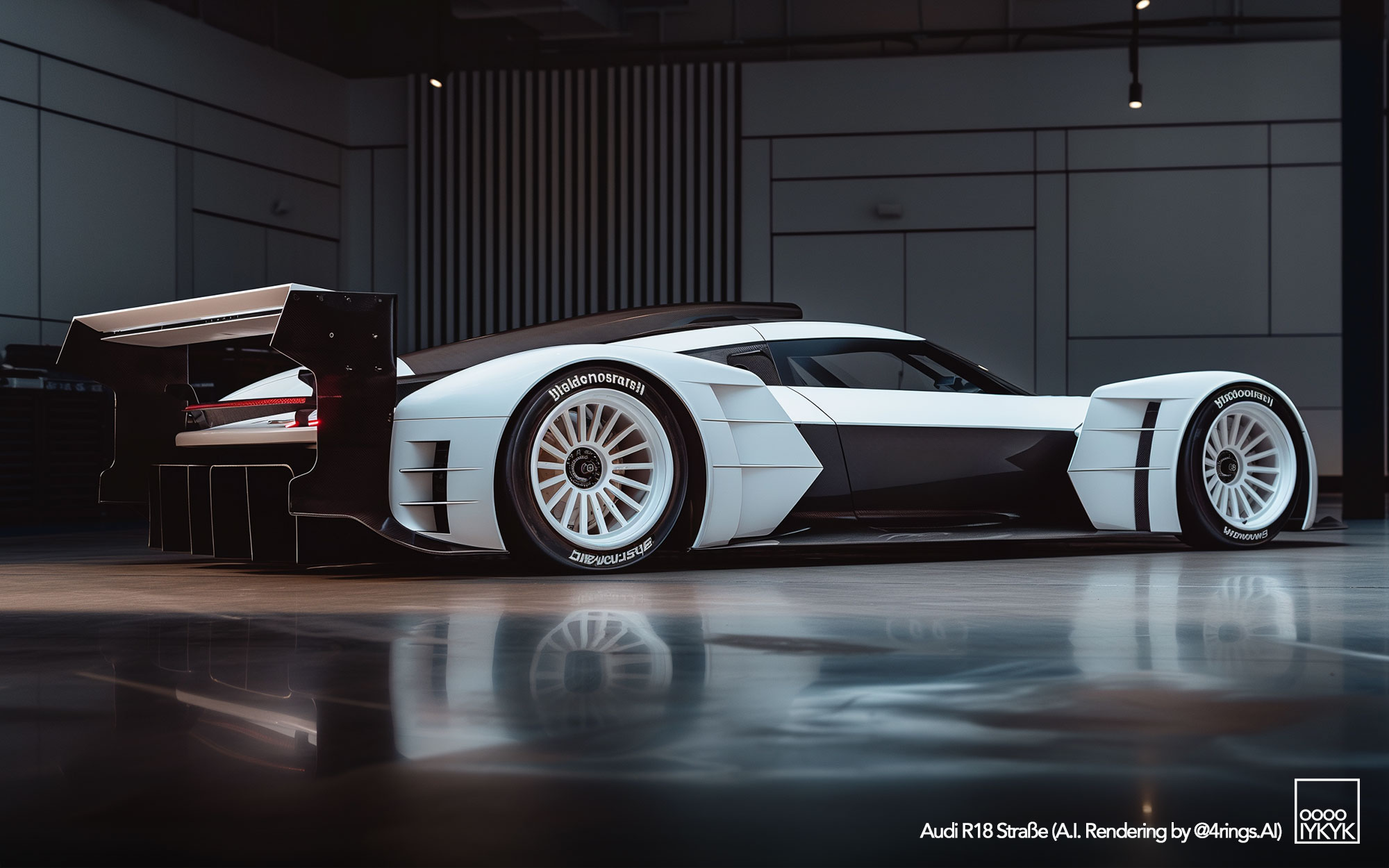
Another idea that tends to commonly recur on @4Rings.AI is the concept of a roadgoing Audi R18. The idea here isn’t simply a one-off painted and upholstered racecar like he Porsche 963 RSP revealed this year, but rather a road car meant to capture the spirit of the R18 much as the R8 road car was far in design from the R8 LMP1 yet still captured the LMP1’s spirit and brought some of that magic to common Audi owners.
Of course, the R18 imagined is almost always a hyper car, something far less obtainable than an Audi R8 that squares off roughly spans the gap between Porsche 911 and Lamborghini Huracán. So, would a production R18 have been built on the Aventador or Revuelto?

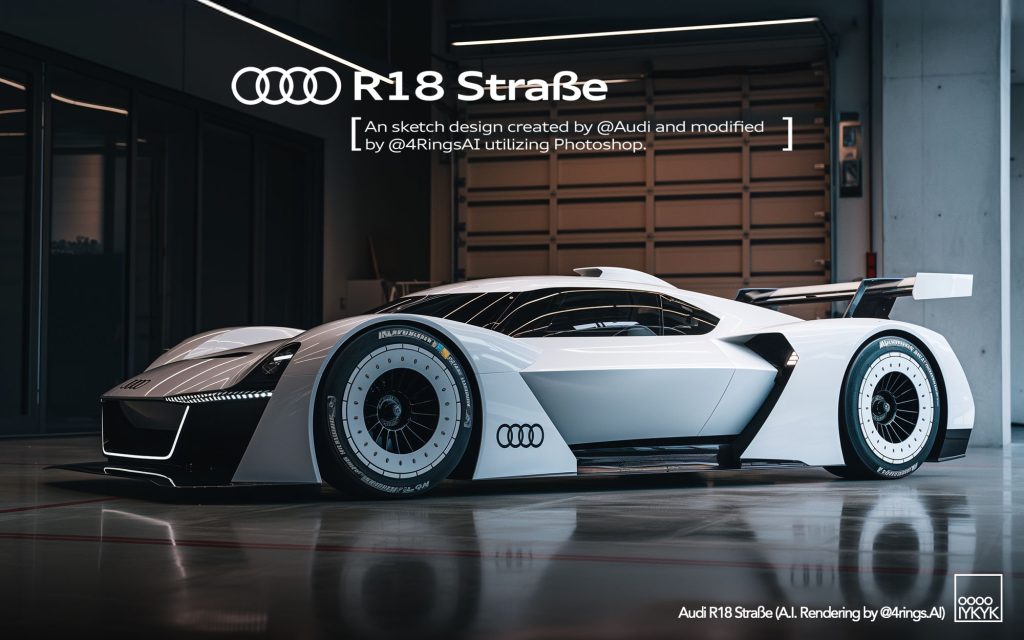
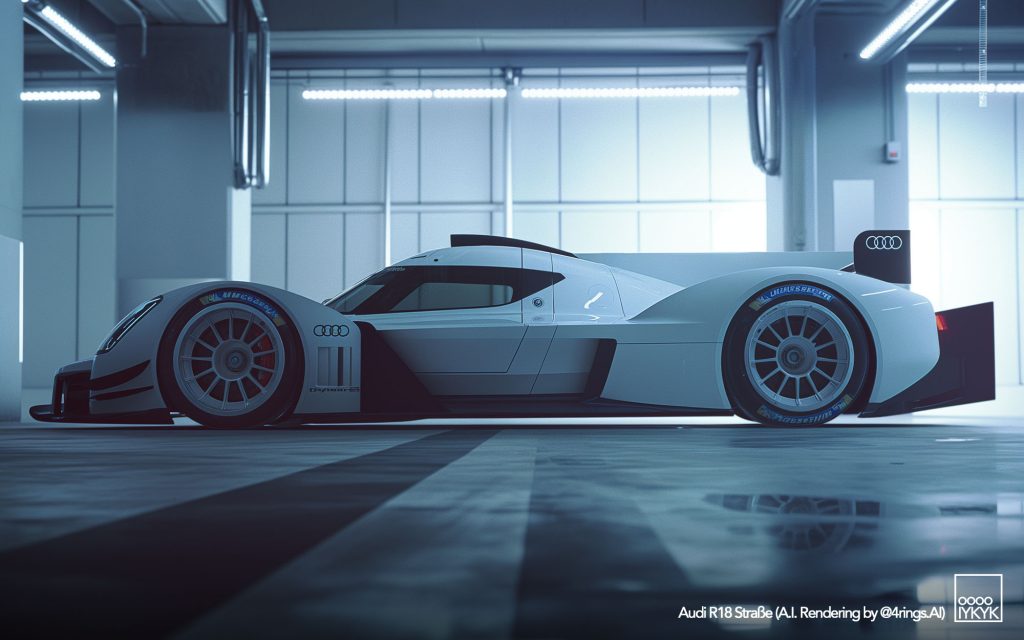

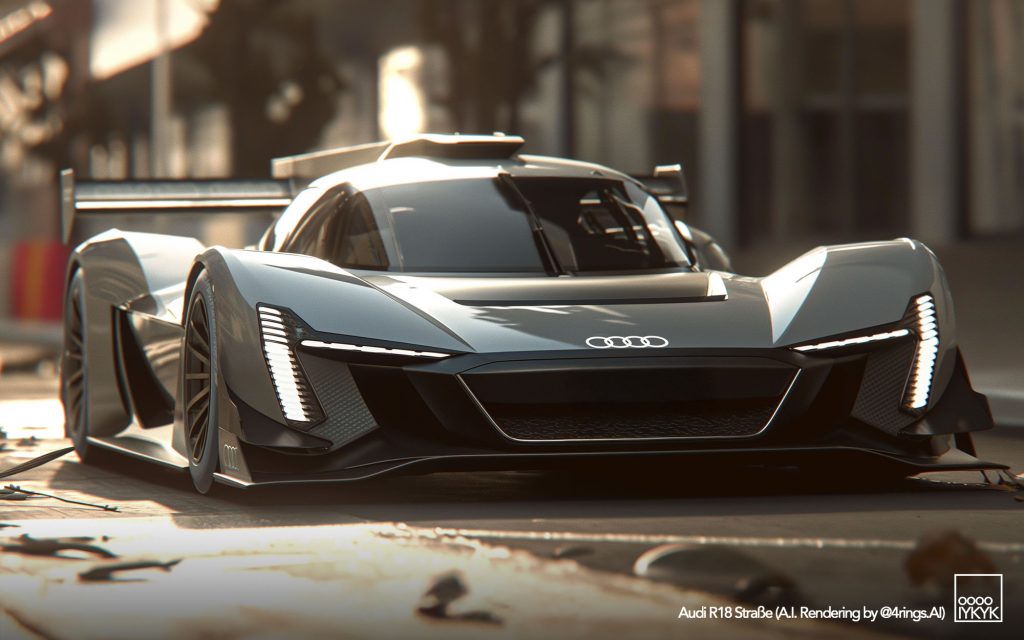
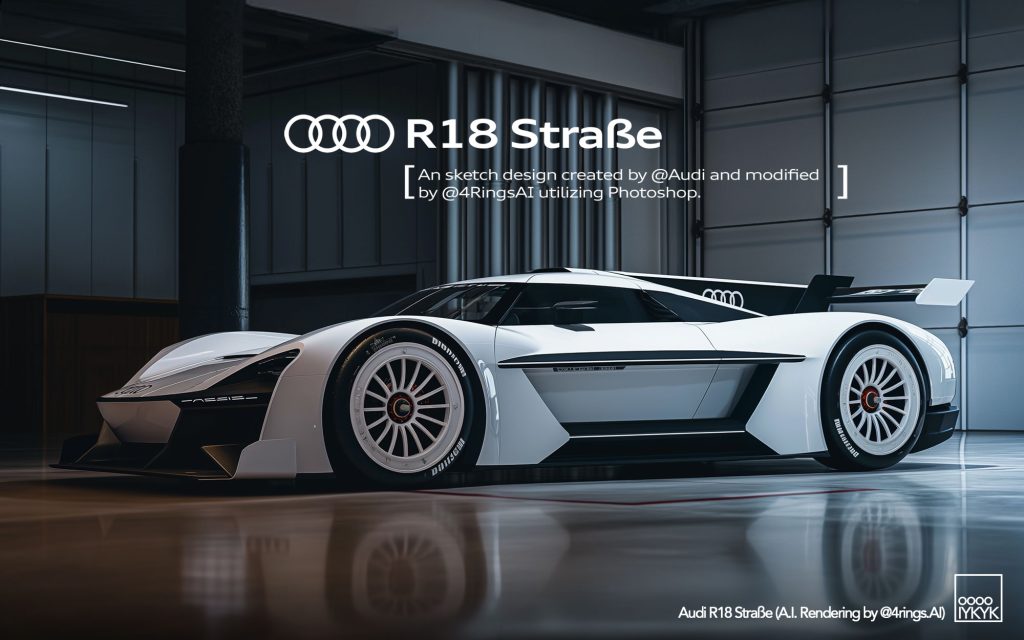
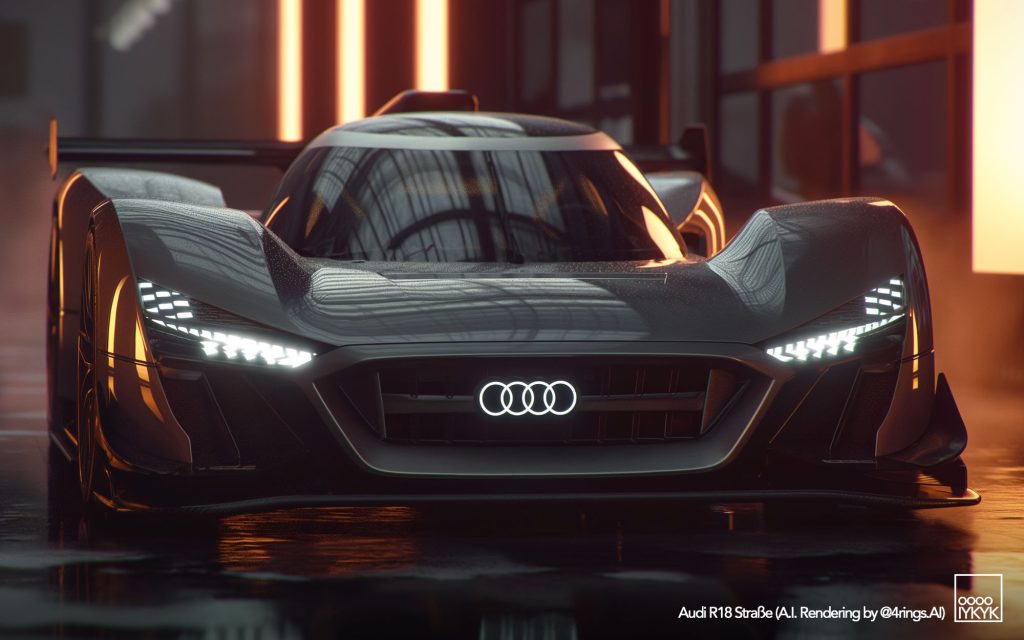
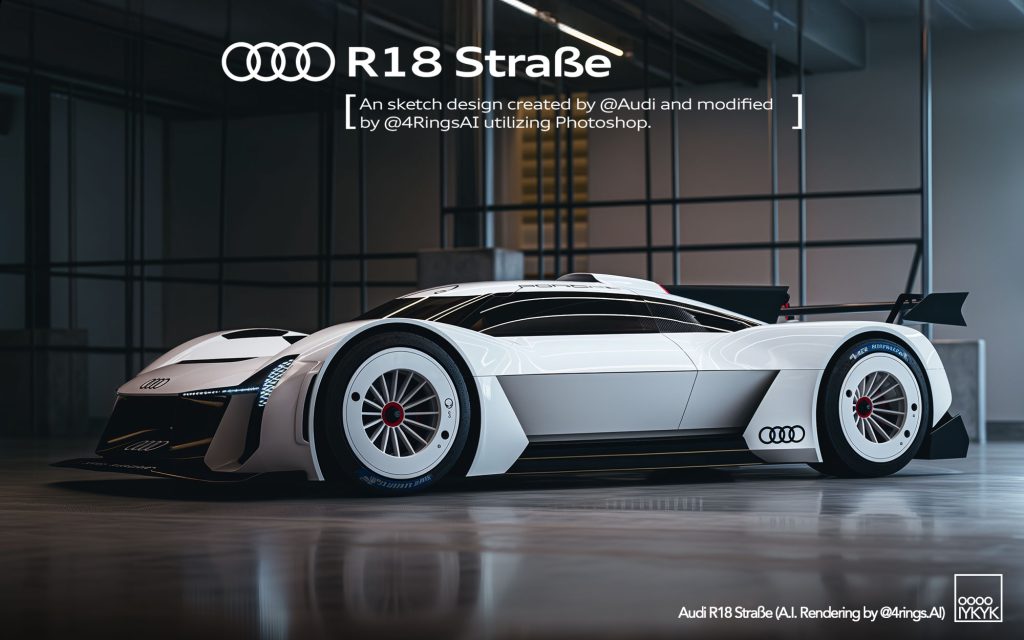

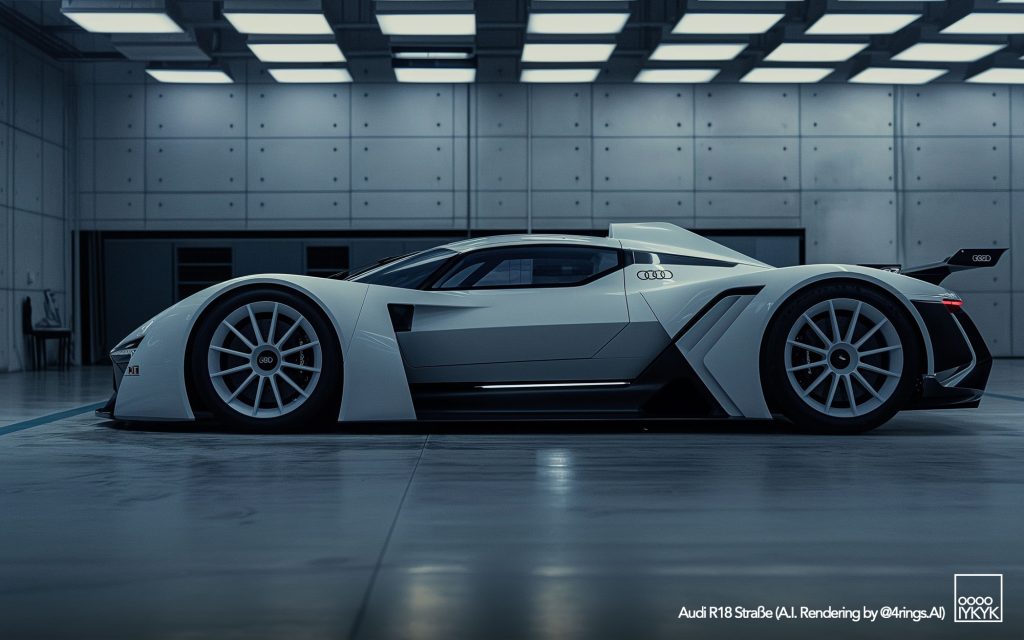
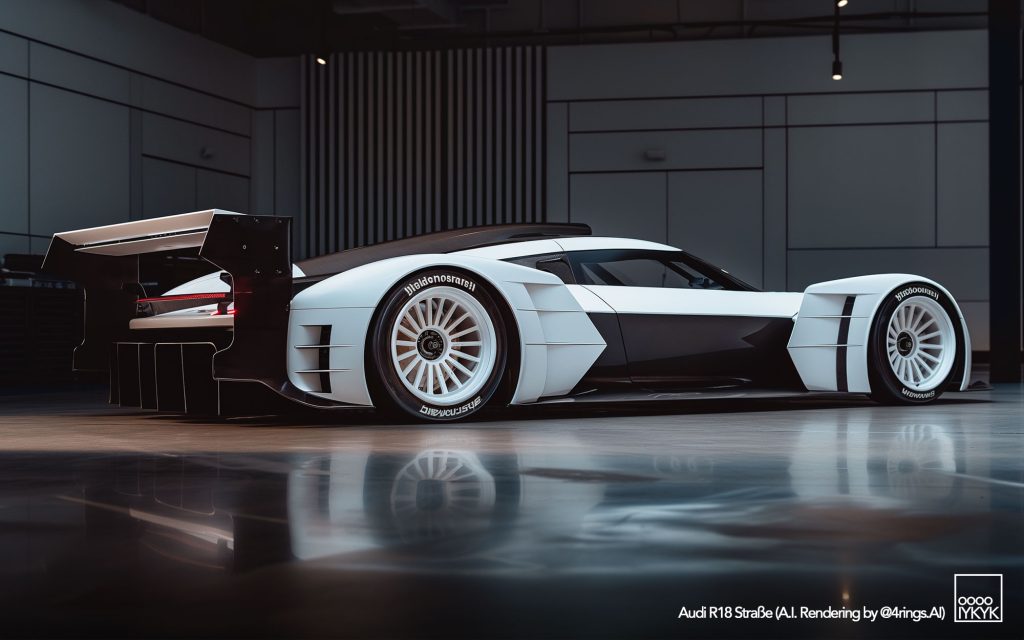

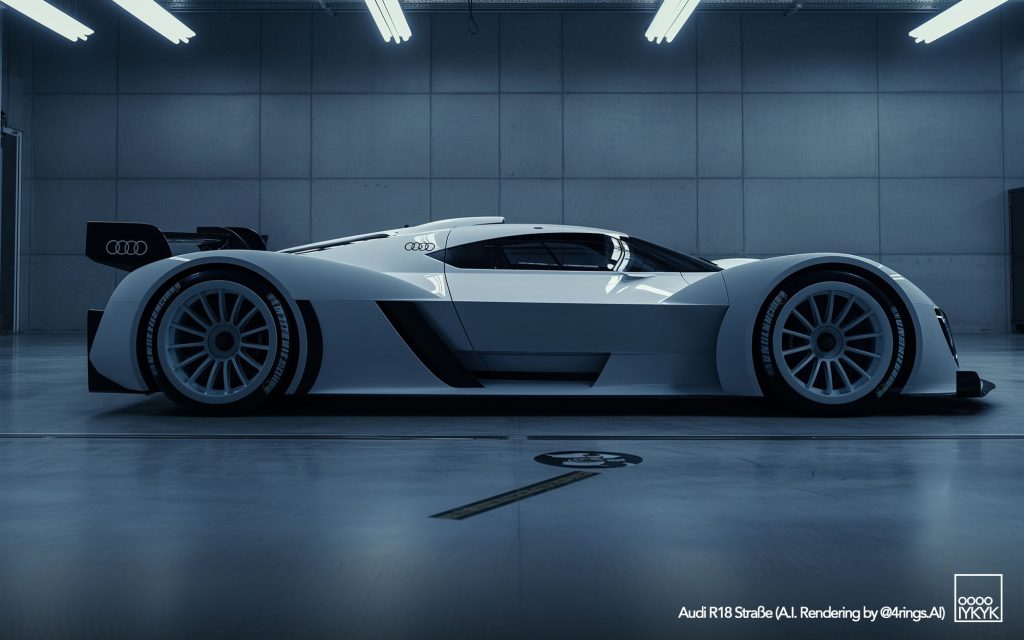

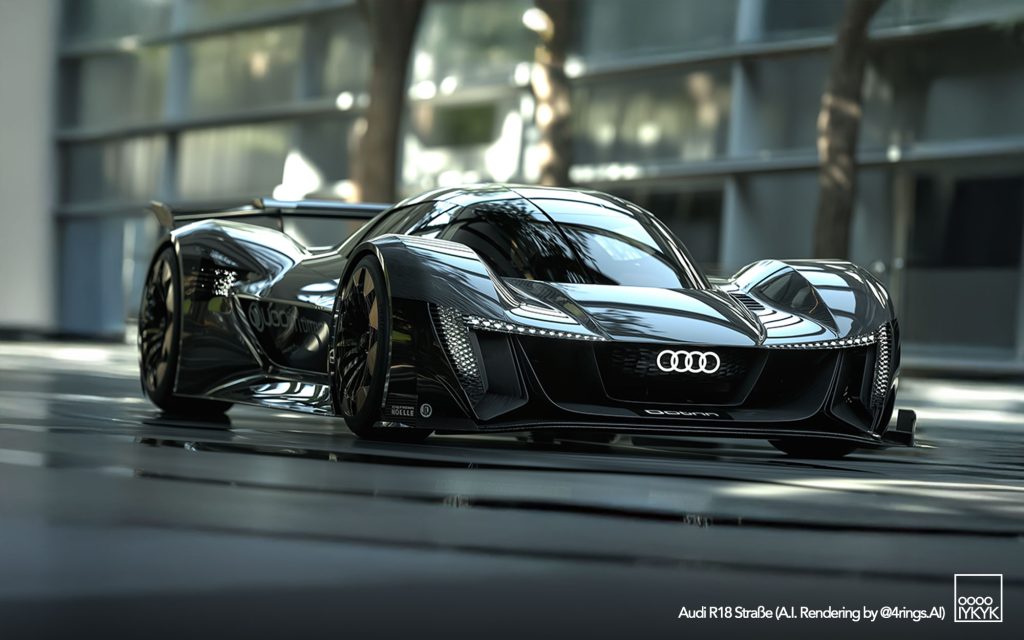
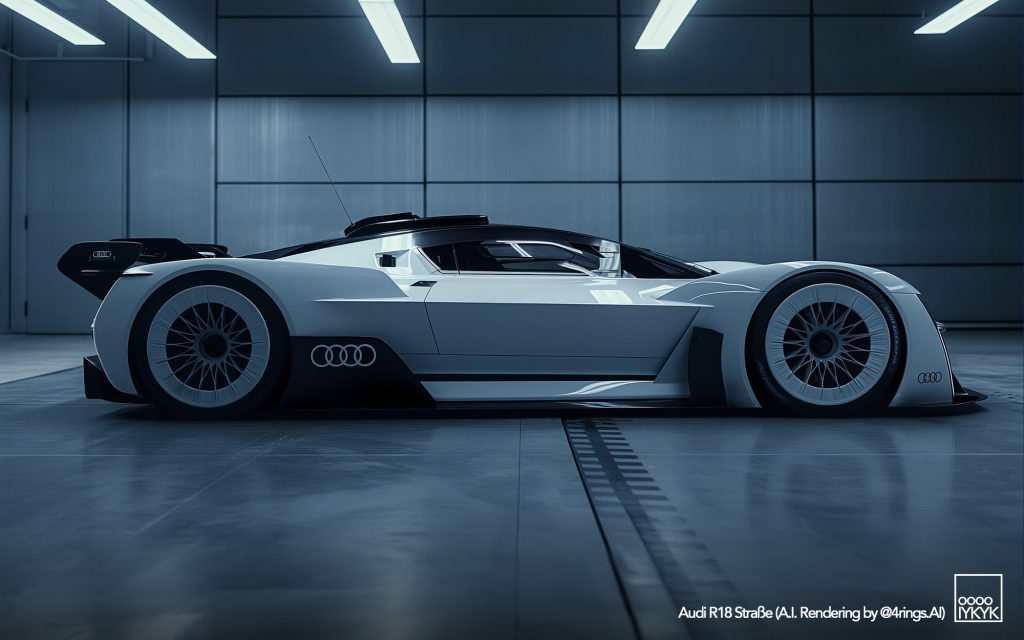

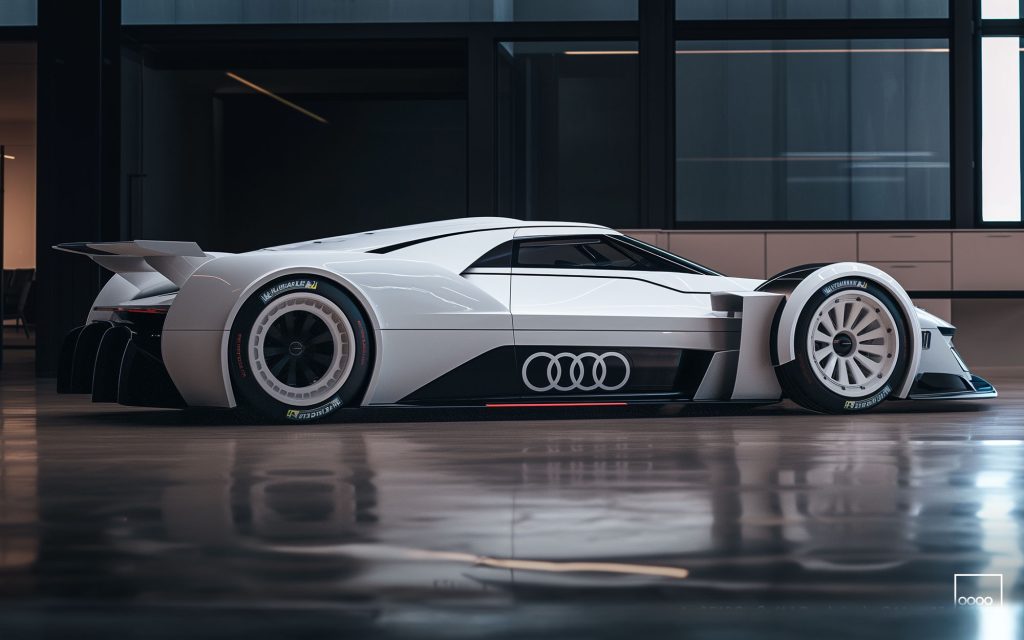
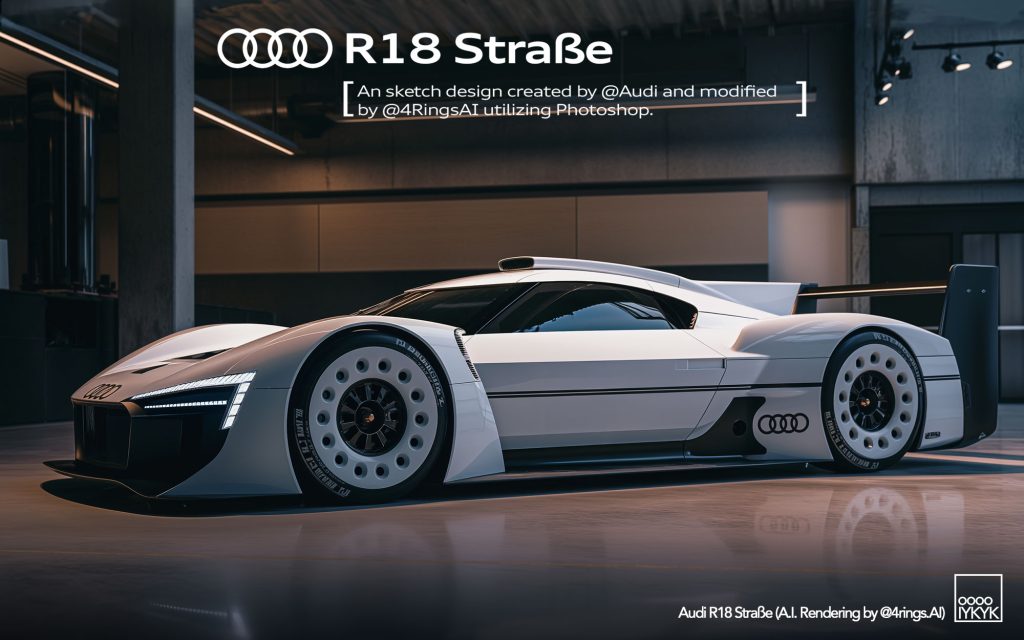
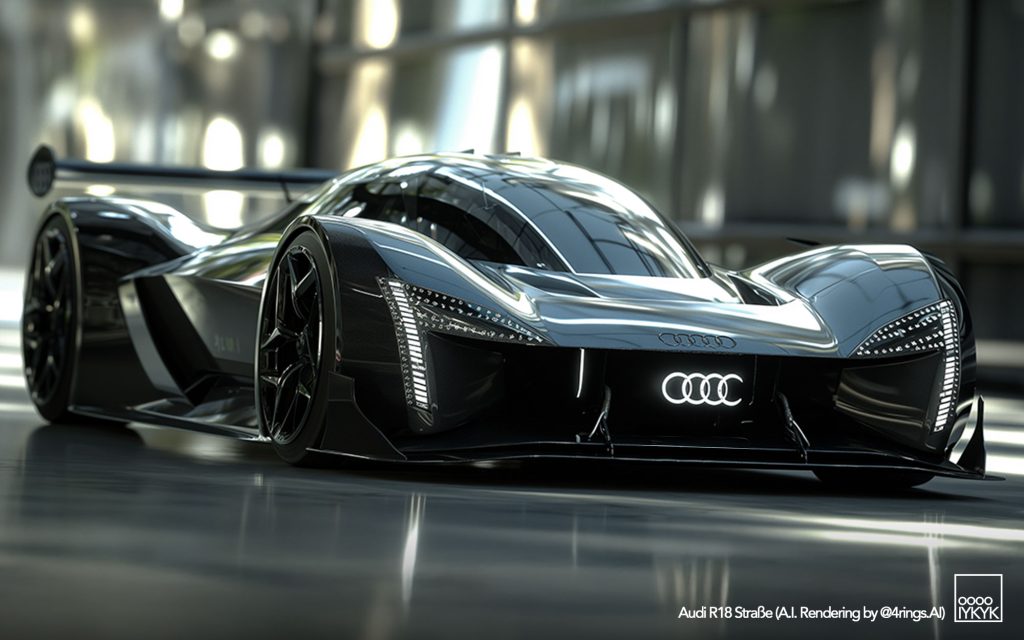

IMAGINED AUDI LMP RALLY CONCEPT
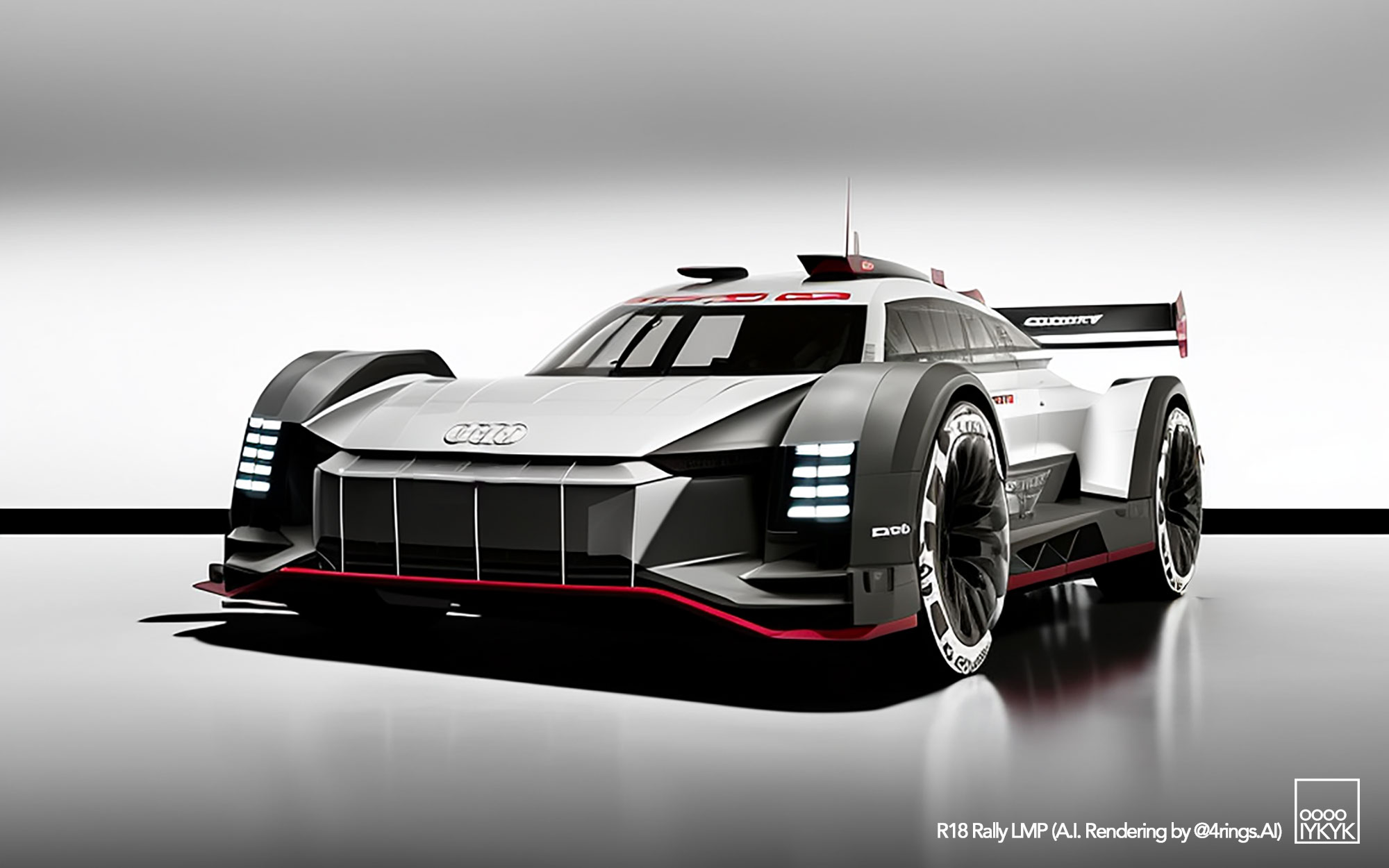
One function less used in the Midjourney A.I. image-generation tool is a “merge”.. With a merge, you blend two images in order to give the engine a better idea of what you want to create. In these early cases, the images were generated either by blending the Audi R18 with design sketches of the Audi activesphere concept, or in the case of the last one below it was a merge of the R18 with an image of the RS Q e-tron Dakar rally car.
Obviously an LMP car as a rally car makes no sense, but it’s still entertaining to imagine such flights of fancy.
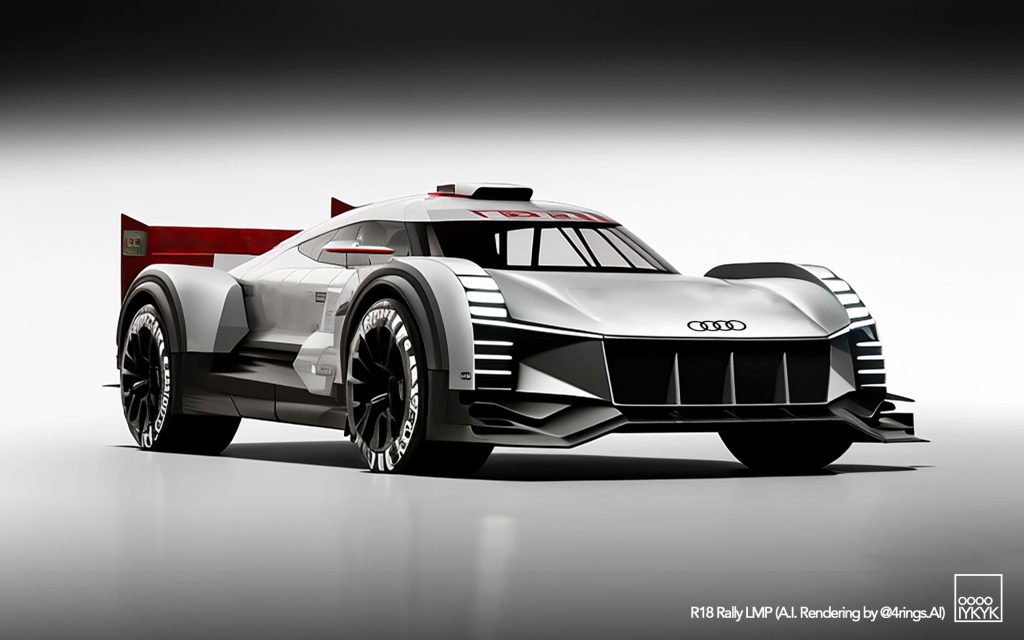
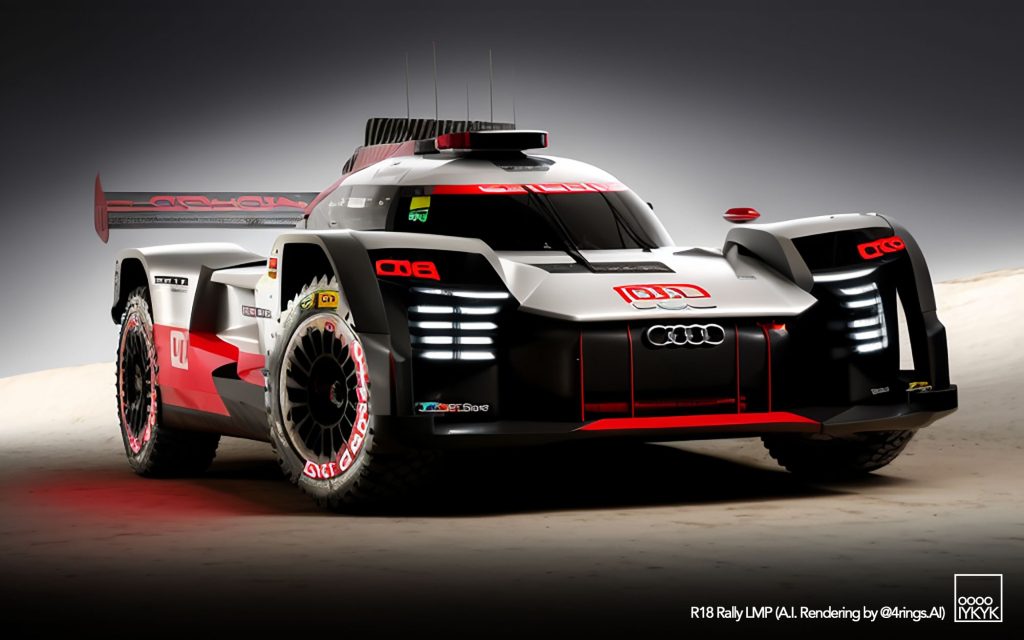
IMAGINED FUTURE FORWARD AUDI LMP CARS

More radically futuristic LMP cars are also a curiosity. Whether development goes to electric, hydrogen or something else entirely you just don’t know. For these, I’ve worked on creating queries that more radically deviate from modern convention. Doing this, the cars get more cartoonish, but also show fascinating details. In particular, the spotlight image above has a very unique LMP take on the Audi singleframe grille, while the headlights also seem to be consistent with some of the latest lighting design we see from Audi on cars like the new C9 A6… particularly in the taillight.



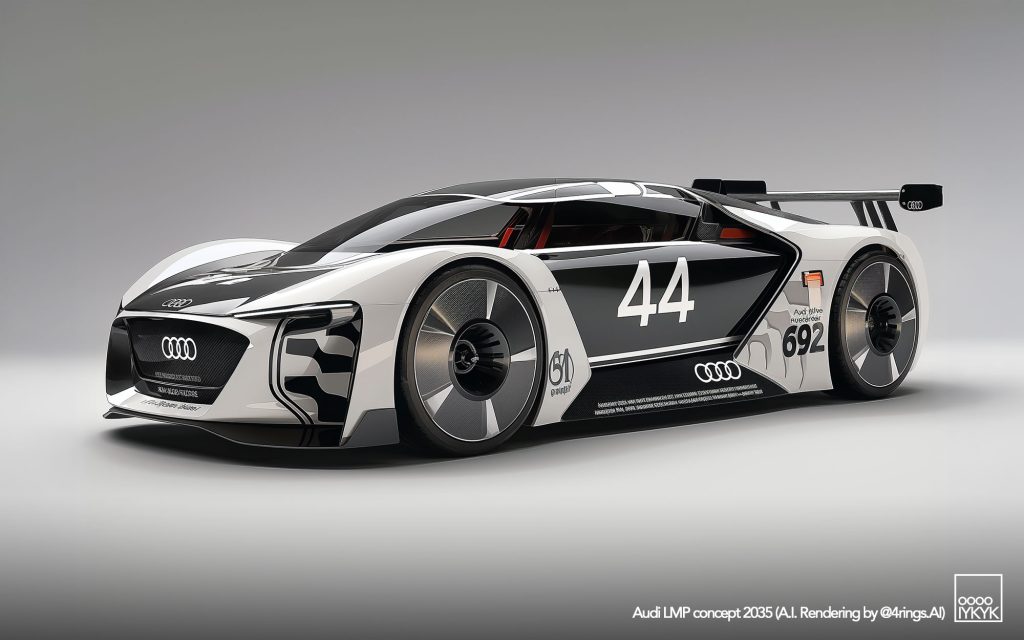
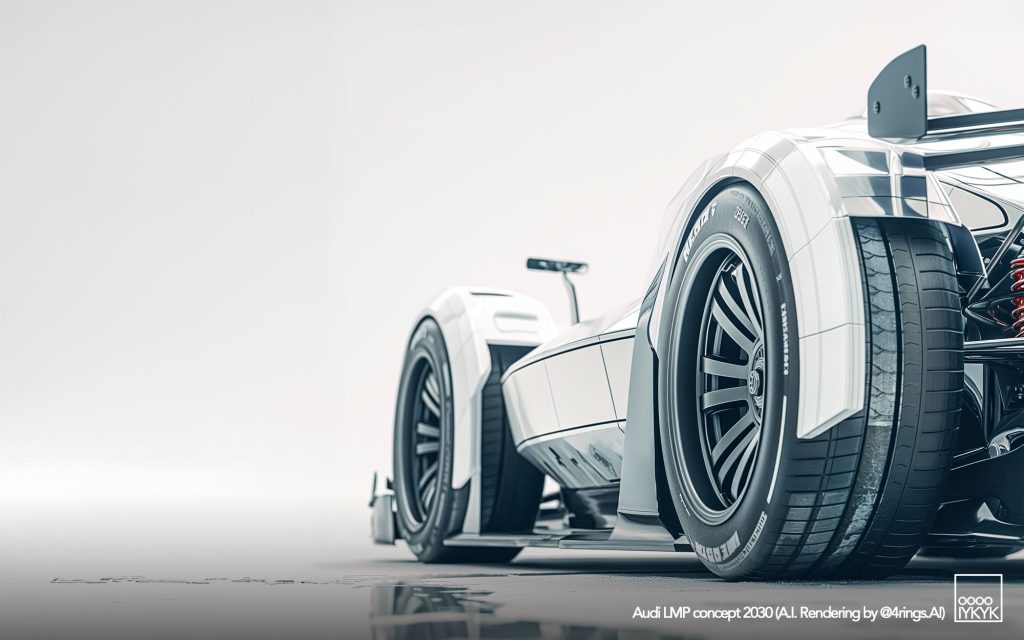
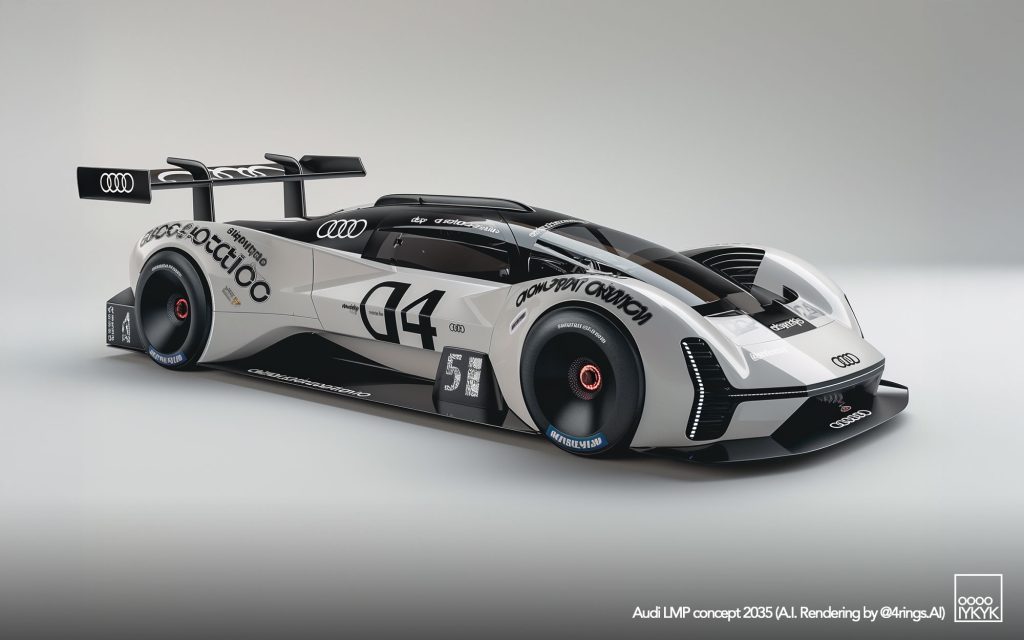
If you like what you see here and want to see more, make sure to give the @4Rings.AI Instagram account a follow.


